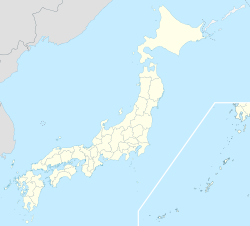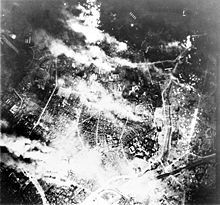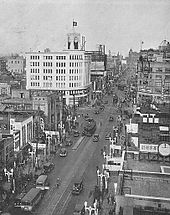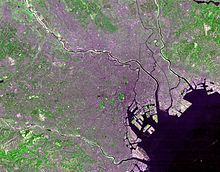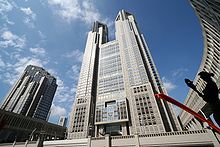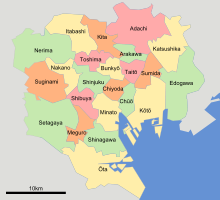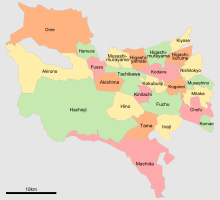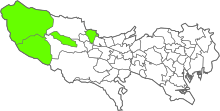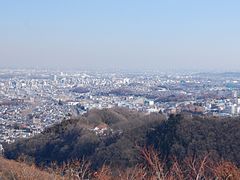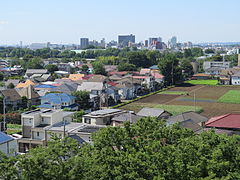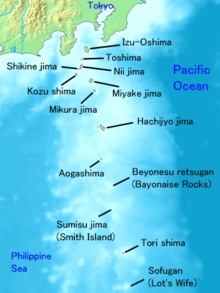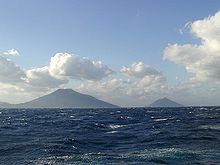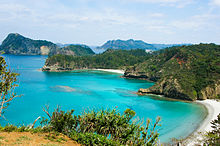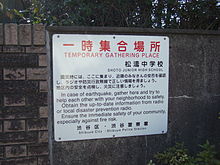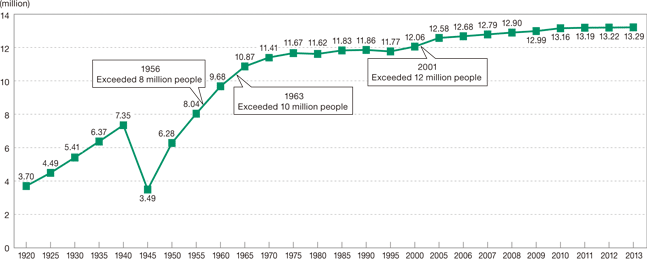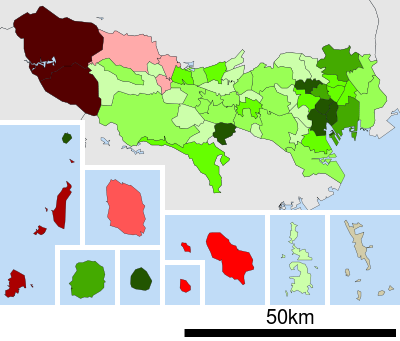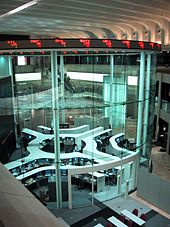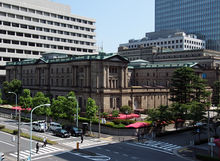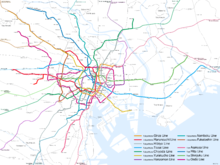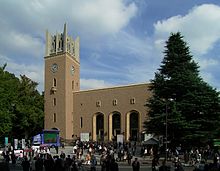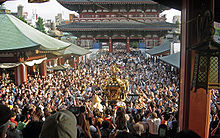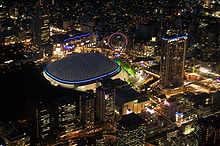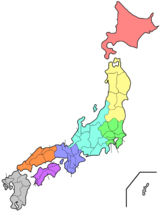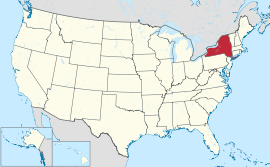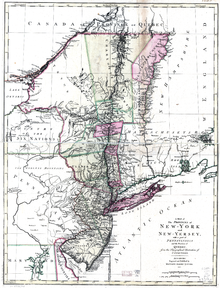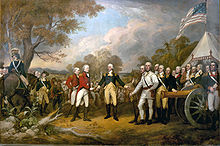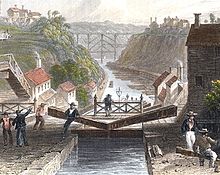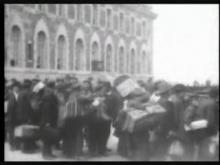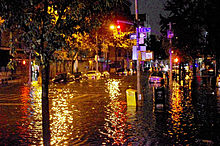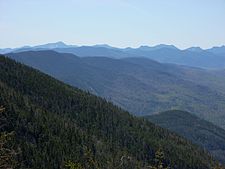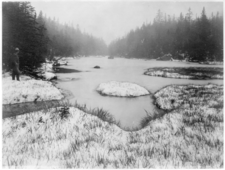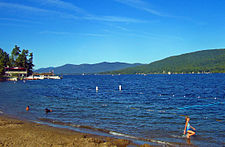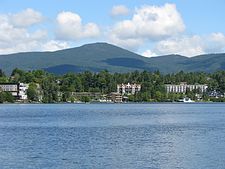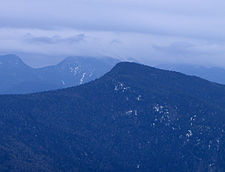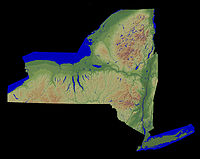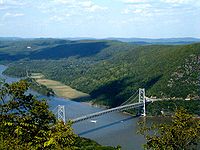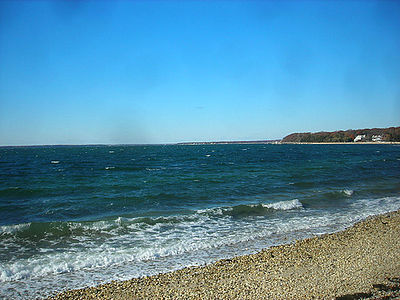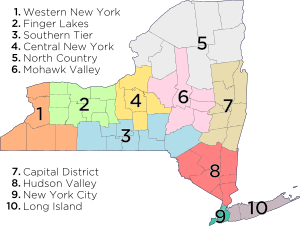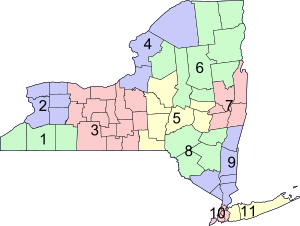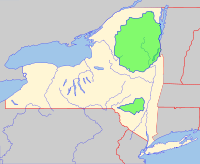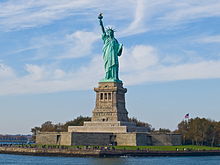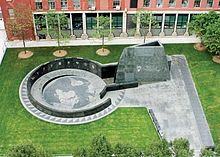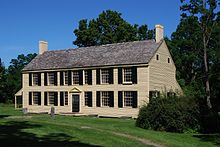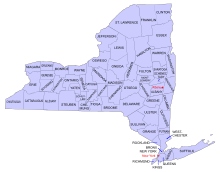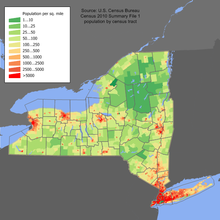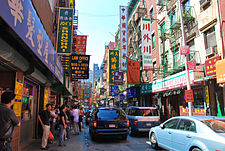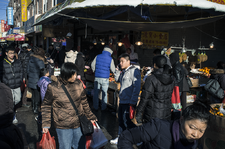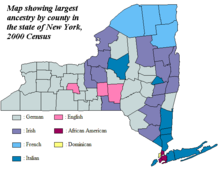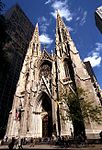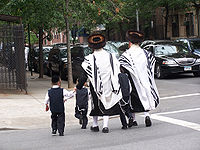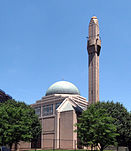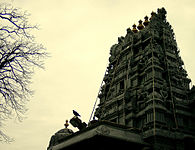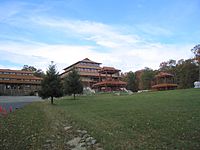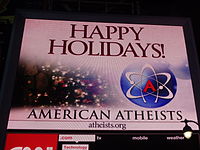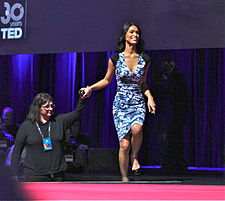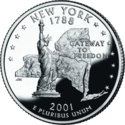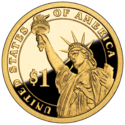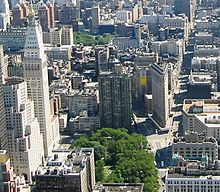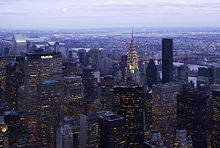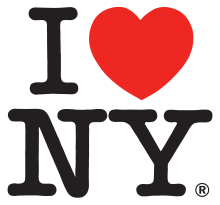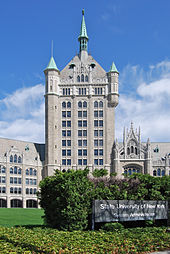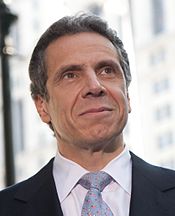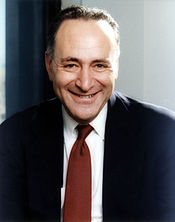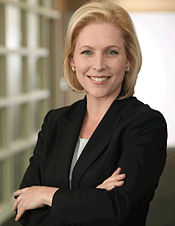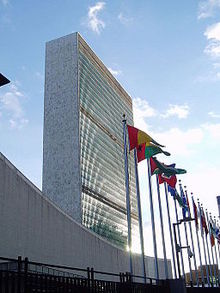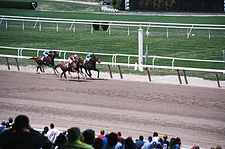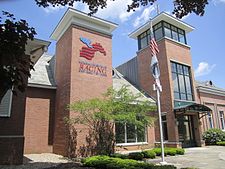| Tokyo 東京都 |
|||||
|---|---|---|---|---|---|
| Metropolis | |||||
| Tokyo Metropolis | |||||

|
|||||
|
|||||
| Anthem: Tokyo Metropolitan Song (東京都歌, Tokyo Toka?)[1] | |||||
| Location of Tokyo within Japan | |||||
| Coordinates: 35°41′N 139°41′E / 35.683°N 139.683°E / 35.683; 139.683Coordinates: 35°41′N 139°41′E / 35.683°N 139.683°E / 35.683; 139.683 | |||||
| Country | |||||
| Region | Kantō | ||||
| Island | Honshu | ||||
| Divisions | 23 special wards, 26 cities, 1 district, & 4 subprefectures | ||||
| Government | |||||
| • Type | Metropolis | ||||
| • Governor | Yuriko Koike (Ind) | ||||
| • Capital | Tokyo[2] | ||||
| Area | |||||
| • Metropolis | 2,187.66 km2 (844.66 sq mi) | ||||
| • Metro | 13,572 km2 (5,240 sq mi) | ||||
| Area rank | 45th | ||||
| Population (July 31, 2016)[3] | |||||
| • Metropolis | 13,617,445 | ||||
| • Density | 6,224.66/km2 (16,121.8/sq mi) | ||||
| • Metro | 37,800,000 | ||||
| • Metro density | 2,662/km2 (6,890/sq mi) | ||||
| • 23 Wards | 8,967,665 | ||||
| (2015 per prefectural government) | |||||
| Demonym(s) | 江戸っ子 (Edokko), 東京人 (Tokyo-jin), 東京っ子 (Tokyokko), Tokyoite | ||||
| Time zone | Japan Standard Time (UTC+9) | ||||
| ISO 3166-2 | JP-13 | ||||
| Flower | Somei-Yoshino cherry blossom | ||||
| Tree | Ginkgo tree (Ginkgo biloba) | ||||
| Bird | Black-headed gull (Larus ridibundus) | ||||
| Website | www |
||||
| Tokyo | |||||||
| Japanese name | |||||||
|---|---|---|---|---|---|---|---|
| Kanji | 東京 東京都 |
||||||
| Kana | トウキョウ トウキョウト |
||||||
| Hiragana | とうきょう とうきょうと |
||||||
| Kyūjitai | 東亰 東亰都 |
||||||
|
|||||||
Tokyo (Japanese: [toːkjoː] (![]() listen), English /ˈtoʊki.oʊ/), officially Tokyo Metropolis,[4] is one of the 47 prefectures of Japan,[5] and is both the capital and most populous city of Japan. The Greater Tokyo Area is the most populous metropolitan area in the world.[6] It is the seat of the Emperor of Japan and the Japanese government. Tokyo is in the Kantō region on the southeastern side of the main island Honshu and includes the Izu Islands and Ogasawara Islands.[7] Formerly known as Edo, it has been the de facto seat of government since 1603 when Shogun Tokugawa Ieyasu made the city his headquarters. It officially became the capital after Emperor Meiji moved his seat to the city from the old capital of Kyoto in 1868; at that time Edo was renamed Tokyo. Tokyo Metropolis was formed in 1943 from the merger of the former Tokyo Prefecture (東京府, Tōkyō-fu) and the city of Tokyo (東京市, Tōkyō-shi).
listen), English /ˈtoʊki.oʊ/), officially Tokyo Metropolis,[4] is one of the 47 prefectures of Japan,[5] and is both the capital and most populous city of Japan. The Greater Tokyo Area is the most populous metropolitan area in the world.[6] It is the seat of the Emperor of Japan and the Japanese government. Tokyo is in the Kantō region on the southeastern side of the main island Honshu and includes the Izu Islands and Ogasawara Islands.[7] Formerly known as Edo, it has been the de facto seat of government since 1603 when Shogun Tokugawa Ieyasu made the city his headquarters. It officially became the capital after Emperor Meiji moved his seat to the city from the old capital of Kyoto in 1868; at that time Edo was renamed Tokyo. Tokyo Metropolis was formed in 1943 from the merger of the former Tokyo Prefecture (東京府, Tōkyō-fu) and the city of Tokyo (東京市, Tōkyō-shi).
Tokyo is often referred to as a city, but is officially known and governed as a "metropolitan prefecture", which differs from and combines elements of a city and a prefecture, a characteristic unique to Tokyo. The Tokyo metropolitan government administers the 23 Special Wards of Tokyo (each governed as an individual city), which cover the area that was the City of Tokyo before it merged and became the metropolitan prefecture in 1943. The metropolitan government also administers 39 municipalities in the western part of the prefecture and the two outlying island chains. The population of the special wards is over 9 million people, with the total population of the prefecture exceeding 13 million. The prefecture is part of the world's most populous metropolitan area with upwards of 37.8 million people and the world's largest urban agglomeration economy. The city hosts 51 of the Fortune Global 500 companies, the highest number of any city in the world.[8] Tokyo ranked third in the International Financial Centres Development IndexEdit. The city is also home to various television networks like Fuji TV, Tokyo MX, TV Tokyo, TV Asahi, Nippon Television, NHK and the Tokyo Broadcasting System.
Tokyo ranked first in the Global Economic Power Index and fourth in the Global Cities Index. The city is considered an alpha+ world city – as listed by the GaWC's 2008 inventory[9] – and in 2014, Tokyo was ranked first in the "Best overall experience" category of TripAdvisor's World City Survey (the city also ranked first in the following categories: "helpfulness of locals", "nightlife", "shopping", "local public transportation" and "cleanliness of streets").[10] In 2015, Tokyo was ranked as the 11th most expensive city for expatriates, according to the Mercer consulting firm,[11] and also the world's 11th most expensive city, according to the Economist Intelligence Unit's cost-of-living survey.[12] In 2015, Tokyo was named the Most Liveable City in the world by the magazine Monocle.[13] The Michelin Guide has awarded Tokyo by far the most Michelin stars of any city in the world.[14][15] Tokyo ranked first in the world in the Safe Cities Index.[16] The 2016 edition of QS Best Student Cities ranked Tokyo as the 3rd-best city in the world to be a university student.[17] Tokyo hosted the 1964 Summer Olympics, the 1979 G-7 summit, the 1986 G-7 summit, and the 1993 G-7 summit, and will host the 2020 Summer Olympics and the 2020 Summer Paralympics.
Contents
Etymology
Tokyo was originally known as Edo (江戸), which means "estuary".[18] Its name was changed to Tokyo (東京 Tōkyō; 東 tō "east", and 京 kyō "capital") when it became the imperial capital with the arrival of Emperor Meiji in 1868,[19] in line with the East Asian tradition of including the word capital (京) in the name of the capital city.[18] During the early Meiji period, the city was also called "Tōkei", an alternative pronunciation for the same Chinese characters representing "Tokyo", making it a kanji homograph. Some surviving official English documents use the spelling "Tokei".[20] However, this pronunciation is now obsolete.[21]
The name Tokyo was first suggested in 1813 in the book Kondō Hisaku (ja) (Secret Plan of Commingling), written by Satō Nobuhiro.[citation needed] When Ōkubo Toshimichi proposed the renaming to the government during the Meiji Restoration, according to Oda Kanshi (織田完之),[vague] he got the idea from that book.
History
Pre-1869 (Edo Period)
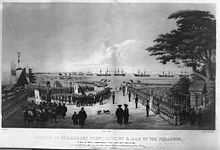
Tokyo was originally a small fishing village named Edo,[7] in what was formerly part of the old Musashi Province.[22] Edo was first fortified by the Edo clan, in the late twelfth century. In 1457, Ōta Dōkan built Edo Castle. In 1590, Tokugawa Ieyasu made Edo his base. When he became shogun in 1603, the town became the center of his nationwide military government. During the subsequent Edo period, Edo grew into one of the largest cities in the world with a population topping one million by the 18th century.[23] Edo became the de facto capital of Japan[24] even while the emperor lived in Kyoto, the imperial capital. During this time, the city enjoyed a prolonged period of peace known as the Pax Tokugawa, and in the presence of such peace, Edo adopted a stringent policy of seclusion, which helped to perpetuate the lack of any serious military threat to the city.[25] The absence of war-inflicted devastation allowed Edo to devote the majority of its resources to rebuilding in the wake of the consistent fires, earthquakes, and other devastating natural disasters that plagued the city. However, this prolonged period of seclusion came to an end with the arrival of American Commodore, Matthew C. Perry in 1853. Commodore Perry negotiated the opening of the ports of Shimoda and Hakodate, leading to an increase in the demand for new foreign goods and subsequently a severe rise in inflation.[26] Social unrest mounted in the wake of these higher prices and culminated in widespread rebellions and demonstrations, especially in the form of the "smashing" of rice establishments.[27] Meanwhile, supporters of the Meiji Emperor leveraged the disruption that these widespread rebellious demonstrations were causing to further consolidate power by overthrowing the last Tokugawa shogun, Yoshinobu, in 1867.[28] After about 263 years, the Pax Tokugawa came to an end.
1869–1943
In 1869, the 17-year-old Emperor Meiji moved to Edo, and in accordance the city was renamed Tokyo (meaning Eastern Capital). The city was divided into Yamanote and Shitamachi. Tokyo was already the nation's political and cultural center,[29] and the emperor's residence made it a de facto imperial capital as well, with the former Edo Castle becoming the Imperial Palace. The city of Tokyo was officially established on May 1, 1889.
Central Tokyo, like Osaka, has been designed since about 1900 to be centered on major railway stations in a high-density fashion, so suburban railways were built relatively cheaply at street level and with their own right-of-way. This differs from many cities in the United States that are low-density and automobile-centric. Though expressways have been built in Tokyo, the basic design has not changed.
Tokyo went on to suffer two major catastrophes in the 20th century: the 1923 Great Kantō earthquake, which left 140,000 dead or missing; and World War II.[30]
1943–present
In 1943, the city of Tokyo merged with the "Metropolitan Prefecture" of Tokyo. Since then, the Tokyo metropolitan government served as both the prefecture government for Tokyo, as well as administering the Special wards of Tokyo, for what had previously been Tokyo City. World War II wrought widespread destruction of most of the city due to the persistent Allied air raids on Japan and the use of incendiary bombs. The bombing of Tokyo in 1944 and 1945 is estimated to have killed between 75,000 and 200,000 civilians and left more than half of the city destroyed.[31] The deadliest night of the war came on March 9–10, 1945, as nearly 700,000 incendiary bombs rained on the eastern half of the city, mainly in heavily residential wards. Two-fifths of the city were completely burned, more than 276,000 buildings were demolished, 100,000 civilians were killed, and 110,000 more were injured.[32][33] Between 1940 and 1945, the population of Japan's capital city dwindled from 6,700,000 to less than 2,800,000, with the majority of those who lost their lives living in "ramshackle, makeshift huts".[34]
After the war, Tokyo was completely rebuilt, and was showcased to the world during the 1964 Summer Olympics. The 1970s brought new high-rise developments such as Sunshine 60, a new and controversial[35] airport at Narita in 1978 (some distance outside city limits), and a population increase to about 11 million (in the metropolitan area).
Tokyo's subway and commuter rail network became one of the busiest in the world[36] as more and more people moved to the area. In the 1980s, real estate prices skyrocketed during a real estate and debt bubble. The bubble burst in the early 1990s, and many companies, banks, and individuals were caught with mortgage backed debts while real estate was shrinking in value. A major recession followed, making the 1990s Japan's "Lost Decade"[37] from which it is now slowly recovering.
Tokyo still sees new urban developments on large lots of less profitable land. Recent projects include Ebisu Garden Place, Tennozu Isle, Shiodome, Roppongi Hills, Shinagawa (now also a Shinkansen station), and the Marunouchi side of Tokyo Station. Buildings of significance are demolished for more up-to-date shopping facilities such as Omotesando Hills.
Land reclamation projects in Tokyo have also been going on for centuries. The most prominent is the Odaiba area, now a major shopping and entertainment center. Various plans have been proposed[38] for transferring national government functions from Tokyo to secondary capitals in other regions of Japan, in order to slow down rapid development in Tokyo and revitalize economically lagging areas of the country. These plans have been controversial[39] within Japan and have yet to be realized.
The 2011 Tōhoku earthquake and tsunami that devastated much of the northeastern coast of Honshu was felt in Tokyo. However, due to Tokyo's earthquake-resistant infrastructure, damage in Tokyo was very minor compared to areas directly hit by the tsunami,[40] although activity in the city was largely halted.[41] The subsequent nuclear crisis caused by the tsunami has also largely left Tokyo unaffected, despite occasional spikes in radiation levels.[42][43]
On September 7, 2013, the IOC selected Tokyo to host the 2020 Summer Olympics. Tokyo will be the first Asian city to host the Olympic Games twice.[44]
Geography
The mainland portion of Tokyo lies northwest of Tokyo Bay and measures about 90 km (56 mi) east to west and 25 km (16 mi) north to south. The average elevation in Tokyo is 40 m (131 ft).[45] Chiba Prefecture borders it to the east, Yamanashi to the west, Kanagawa to the south, and Saitama to the north. Mainland Tokyo is further subdivided into the special wards (occupying the eastern half) and the Tama area (多摩地域) stretching westwards.
Also within the administrative boundaries of Tokyo Metropolis are two island chains in the Pacific Ocean directly south: the Izu Islands, and the Ogasawara Islands, which stretch more than 1,000 km (620 mi) away from the mainland. Because of these islands and the mountainous regions to the west, Tokyo's overall population density figures far underrepresent the real figures for the urban and suburban regions of Tokyo.
Under Japanese law, Tokyo is designated as a to (都), translated as metropolis.[46] Its administrative structure is similar to that of Japan's other prefectures. The 23 special wards (特別区 -ku), which until 1943 constituted the city of Tokyo, are now separate, self-governing municipalities, each having a mayor, a council, and the status of a city.
In addition to these 23 special wards, Tokyo also includes 26 more cities (市 -shi), five towns (町 -chō or machi), and eight villages (村 -son or -mura), each of which has a local government. The Tokyo Metropolitan Government, which administers the whole metropolis, is headed by a publicly elected governor and metropolitan assembly. Its headquarters are located in Shinjuku Ward.
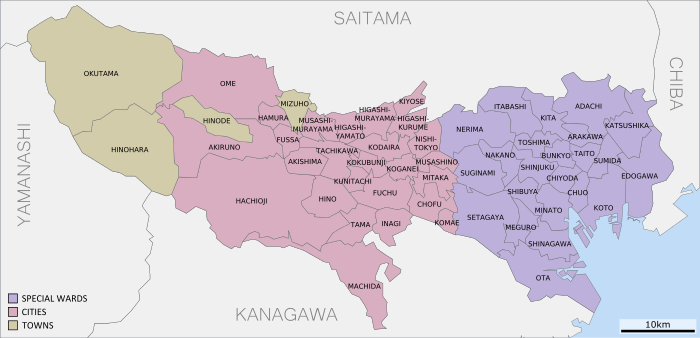
Special wards
The special wards (特別区, tokubetsu-ku) of Tokyo comprise the area formerly incorporated as Tokyo City. On July 1, 1943, Tokyo City was merged with Tokyo Prefecture (東京府, Tōkyō-fu) forming the current "metropolitan prefecture". As a result, unlike other city wards in Japan, these wards are not conterminous with a larger incorporated city. While falling under the jurisdiction of Tokyo Metropolitan Government, each ward is also a borough with its own elected leader and council, like other cities of Japan. The special wards use the word "city" in their official English name (e.g. Chiyoda City).
The wards differ from other cities in having a unique administrative relationship with the prefectural government. Certain municipal functions, such as waterworks, sewerage, and fire-fighting, are handled by the Tokyo Metropolitan Government. To pay for the added administrative costs, the prefecture collects municipal taxes, which would usually be levied by the city.[47]
The special wards of Tokyo are:
The "three central wards" of Tokyo – Chiyoda, Chūō and Minato – are the business core of the city, with a daytime population more than seven times higher than their nighttime population.[48] Chiyoda Ward is unique in that it is in the very heart of the former Tokyo City, yet is one of the least populated wards. It is occupied by many major Japanese companies, and is also the seat of the national government, and the Japanese emperor. It is often called the "political center" of the country.[49] Akihabara, known for being an otaku cultural center and a shopping district for computer goods, is also located in Chiyoda.
Tama Area (Western Tokyo)
To the west of the special wards, Tokyo Metropolis consists of cities, towns and villages that enjoy the same legal status as those elsewhere in Japan.
While serving as "bed towns" for those working in central Tokyo, some of them also have a local commercial and industrial base. Collectively, these are often known as the Tama Area or Western Tokyo.
Cities
Twenty-six cities lie within the western part of Tokyo:
The Tokyo Metropolitan Government has designated Hachiōji, Tachikawa, Machida, Ōme and Tama New Town as regional centers of the Tama area,[50] as part of its plans to disperse urban functions away from central Tokyo.
Nishi-Tama District
The far west is occupied by the district (gun) of Nishi-Tama. Much of this area is mountainous and unsuitable for urbanization. The highest mountain in Tokyo, Mount Kumotori, is 2,017 m (6,617 ft) high; other mountains in Tokyo include Takasu (1,737 m (5,699 ft)), Odake (1,266 m (4,154 ft)), and Mitake (929 m (3,048 ft)). Lake Okutama, on the Tama River near Yamanashi Prefecture, is Tokyo's largest lake. The district is composed of three towns (Hinode, Mizuho and Okutama) and one village (Hinohara).
Islands
Tokyo has numerous outlying islands, which extend as far as 1,850 km (1,150 mi) from central Tokyo. Because of the islands' distance from the administrative headquarters of the metropolitan government in Shinjuku, local offices administer them.
The Izu Islands are a group of volcanic islands and form part of the Fuji-Hakone-Izu National Park. The islands in order from closest to Tokyo are Izu Ōshima, Toshima, Nii-jima, Shikine-jima, Kōzu-shima, Miyake-jima, Mikurajima, Hachijō-jima, and Aogashima. The Izu Islands are grouped into three subprefectures. Izu Ōshima and Hachijojima are towns. The remaining islands are six villages, with Niijima and Shikinejima forming one village.
The Ogasawara Islands include, from north to south, Chichi-jima, Nishinoshima, Haha-jima, Kita Iwo Jima, Iwo Jima, and Minami Iwo Jima. Ogasawara also administers two tiny outlying islands: Minami Torishima, the easternmost point in Japan and at 1,850 km (1,150 mi) the most distant island from central Tokyo, and Okinotorishima, the southernmost point in Japan. Japan's claim on an exclusive economic zone (EEZ) surrounding Okinotorishima is contested by China and South Korea as they regard Okinotorishima as uninhabitable rocks which have no EEZ. The Iwo chain and the outlying islands have no permanent population, but host Japanese Self-Defense Forces personnel. Local populations are only found on Chichi-jima and Haha-jima. The islands form both Ogasawara Subprefecture and the village of Ogasawara, Tokyo.
| Subprefecture | Municipality | Type |
|---|---|---|
| Hachijō | Hachijō | Town |
| Aogashima | Village | |
| Miyake | Miyake | Village |
| Mikurajima | Village | |
| Ōshima | Ōshima | Town |
| Toshima | Village | |
| Niijima | Village | |
| Kōzushima | Village | |
| Ogasawara | Ogasawara | Village |
National parks
As of March 31, 2008, 36% of the total land area of the prefecture was designated as Natural Parks (second only to Shiga Prefecture), namely the Chichibu Tama Kai, Fuji-Hakone-Izu, and Ogasawara National Parks (the last a UNESCO World Heritage Site); Meiji no Mori Takao Quasi-National Park; and Akikawa Kyūryō, Hamura Kusabana Kyūryō, Sayama, Takao Jinba, Takiyama, and Tama Kyūryō Prefectural Natural Parks.[51]
Ueno Park is well known for its museums: Tokyo National Museum, National Museum of Nature and Science, Shitamachi Museum and National Museum for Western Art, among others. There are also art works and statues at several places in the park. There is also a zoo in the park, and the park is a popular destination to view cherry blossoms.
Seismicity
Tokyo was hit by powerful earthquakes in 1703, 1782, 1812, 1855, 1923, and 2011.[52][53] The 1923 earthquake, with an estimated magnitude of 8.3, killed 142,000 people. Tokyo is near the boundary of three plates.
Climate
The former city of Tokyo and the majority of mainland Tokyo lie in the humid subtropical climate zone (Köppen climate classification Cfa),[54] with hot humid summers and generally mild winters with cool spells. The region, like much of Japan, experiences a one-month seasonal lag, with the warmest month being August, which averages 26.4 °C (79.5 °F), and the coolest month being January, averaging 5.2 °C (41.4 °F). The record low temperature is −9.2 °C (15.4 °F), and the record high is 39.5 °C (103.1 °F), though there was once an unofficial reading of 42.7 °C (108.9 °F) at the Primary School Station.[55] Annual rainfall averages nearly 1,530 millimetres (60.2 in), with a wetter summer and a drier winter. Snowfall is sporadic, but does occur almost annually.[56] Tokyo also often sees typhoons every year, though few are strong. The last one to hit was Fitow in 2007,[57][dubious – discuss] while the most rainy month since records began in 1876 has been October 2004 with 780 millimetres (30 in) of rain,[58] including 270.5 millimetres (10.6 in) on the ninth of that month.[59]
| Climate data for Ōtemachi,[60] Chiyoda ward, Tokyo (1981–2010) | |||||||||||||
|---|---|---|---|---|---|---|---|---|---|---|---|---|---|
| Month | Jan | Feb | Mar | Apr | May | Jun | Jul | Aug | Sep | Oct | Nov | Dec | Year |
| Record high °C (°F) | 22.6 (72.7) |
24.9 (76.8) |
25.3 (77.5) |
29.2 (84.6) |
32.2 (90) |
36.2 (97.2) |
39.5 (103.1) |
39.1 (102.4) |
38.1 (100.6) |
32.6 (90.7) |
27.3 (81.1) |
24.8 (76.6) |
39.5 (103.1) |
| Average high °C (°F) | 9.6 (49.3) |
10.4 (50.7) |
13.6 (56.5) |
19.0 (66.2) |
22.9 (73.2) |
25.5 (77.9) |
29.2 (84.6) |
30.8 (87.4) |
26.9 (80.4) |
21.5 (70.7) |
16.3 (61.3) |
11.9 (53.4) |
19.8 (67.6) |
| Daily mean °C (°F) | 5.2 (41.4) |
5.7 (42.3) |
8.7 (47.7) |
13.9 (57) |
18.2 (64.8) |
21.4 (70.5) |
25.0 (77) |
26.4 (79.5) |
22.8 (73) |
17.5 (63.5) |
12.1 (53.8) |
7.6 (45.7) |
15.4 (59.7) |
| Average low °C (°F) | 0.9 (33.6) |
1.7 (35.1) |
4.4 (39.9) |
9.4 (48.9) |
14.0 (57.2) |
18.0 (64.4) |
21.8 (71.2) |
23.0 (73.4) |
19.7 (67.5) |
14.2 (57.6) |
8.3 (46.9) |
3.5 (38.3) |
11.6 (52.9) |
| Record low °C (°F) | −9.2 (15.4) |
−7.9 (17.8) |
−5.6 (21.9) |
−3.1 (26.4) |
2.2 (36) |
8.5 (47.3) |
13.0 (55.4) |
15.4 (59.7) |
10.5 (50.9) |
−0.5 (31.1) |
−3.1 (26.4) |
−6.8 (19.8) |
−9.2 (15.4) |
| Average precipitation mm (inches) | 52.3 (2.059) |
56.1 (2.209) |
117.5 (4.626) |
124.5 (4.902) |
137.8 (5.425) |
167.7 (6.602) |
153.5 (6.043) |
168.2 (6.622) |
209.9 (8.264) |
197.8 (7.787) |
92.5 (3.642) |
51.0 (2.008) |
1,528.8 (60.189) |
| Average snowfall cm (inches) | 5 (2) |
5 (2) |
1 (0.4) |
0 (0) |
0 (0) |
0 (0) |
0 (0) |
0 (0) |
0 (0) |
0 (0) |
0 (0) |
0 (0) |
11 (4.3) |
| Average precipitation days (≥ 0.5 mm) | 5.3 | 6.2 | 11.0 | 11.0 | 11.4 | 12.7 | 11.8 | 9.0 | 12.2 | 10.8 | 7.6 | 4.9 | 114.0 |
| Average snowy days | 2.8 | 3.7 | 2.2 | 0.2 | 0.0 | 0.0 | 0.0 | 0.0 | 0.0 | 0.0 | 0.0 | 0.8 | 9.7 |
| Average relative humidity (%) | 52 | 53 | 56 | 62 | 69 | 75 | 77 | 73 | 75 | 68 | 65 | 56 | 62 |
| Mean monthly sunshine hours | 184.5 | 165.8 | 163.1 | 176.9 | 167.8 | 125.4 | 146.4 | 169.0 | 120.9 | 131.0 | 147.9 | 178.0 | 1,876.7 |
| Source: Japan Meteorological Agency (records 1872–present)[61][62][63] | |||||||||||||
The western mountainous area of mainland Tokyo, Okutama also lies in the humid subtropical climate (Köppen classification Cfa).
| Climate data for Ogouchi, Okutama town, Tokyo (1981–2010) | |||||||||||||
|---|---|---|---|---|---|---|---|---|---|---|---|---|---|
| Month | Jan | Feb | Mar | Apr | May | Jun | Jul | Aug | Sep | Oct | Nov | Dec | Year |
| Average high °C (°F) | 6.7 (44.1) |
7.1 (44.8) |
10.3 (50.5) |
16.3 (61.3) |
20.5 (68.9) |
23.0 (73.4) |
26.8 (80.2) |
28.2 (82.8) |
23.9 (75) |
18.4 (65.1) |
13.8 (56.8) |
9.3 (48.7) |
17.1 (62.8) |
| Daily mean °C (°F) | 1.3 (34.3) |
1.8 (35.2) |
5.0 (41) |
10.6 (51.1) |
15.1 (59.2) |
18.5 (65.3) |
22.0 (71.6) |
23.2 (73.8) |
19.5 (67.1) |
13.8 (56.8) |
8.5 (47.3) |
3.8 (38.8) |
11.9 (53.4) |
| Average low °C (°F) | −2.7 (27.1) |
−2.3 (27.9) |
0.6 (33.1) |
5.6 (42.1) |
10.5 (50.9) |
14.8 (58.6) |
18.7 (65.7) |
19.7 (67.5) |
16.3 (61.3) |
10.3 (50.5) |
4.6 (40.3) |
−0.1 (31.8) |
8.1 (46.6) |
| Average precipitation mm (inches) | 44.1 (1.736) |
50.0 (1.969) |
92.5 (3.642) |
109.6 (4.315) |
120.3 (4.736) |
155.7 (6.13) |
195.4 (7.693) |
280.6 (11.047) |
271.3 (10.681) |
172.4 (6.787) |
76.7 (3.02) |
39.9 (1.571) |
1,623.5 (63.917) |
| Mean monthly sunshine hours | 147.1 | 127.7 | 132.2 | 161.8 | 154.9 | 109.8 | 127.6 | 148.3 | 99.1 | 94.5 | 122.1 | 145.6 | 1,570.7 |
| Source: Japan Meteorological Agency[64] | |||||||||||||
The climate of Chichi-jima in Ogasawara village is on the boundary between the tropical savanna climate (Köppen classification Aw) and the humid subtropical climate (Köppen classification Cfa).
| Climate data for Chichijima, Ogasawara, Tokyo (1981–2010) | |||||||||||||
|---|---|---|---|---|---|---|---|---|---|---|---|---|---|
| Month | Jan | Feb | Mar | Apr | May | Jun | Jul | Aug | Sep | Oct | Nov | Dec | Year |
| Average high °C (°F) | 20.5 (68.9) |
20.1 (68.2) |
21.5 (70.7) |
23.2 (73.8) |
25.4 (77.7) |
28.0 (82.4) |
30.0 (86) |
29.9 (85.8) |
29.7 (85.5) |
28.3 (82.9) |
25.6 (78.1) |
22.4 (72.3) |
25.4 (77.7) |
| Daily mean °C (°F) | 18.4 (65.1) |
17.9 (64.2) |
19.2 (66.6) |
21.0 (69.8) |
23.2 (73.8) |
25.8 (78.4) |
27.5 (81.5) |
27.7 (81.9) |
27.5 (81.5) |
26.2 (79.2) |
23.5 (74.3) |
20.3 (68.5) |
23.2 (73.8) |
| Average low °C (°F) | 15.7 (60.3) |
15.3 (59.5) |
16.7 (62.1) |
18.8 (65.8) |
21.2 (70.2) |
24.0 (75.2) |
25.4 (77.7) |
25.9 (78.6) |
25.5 (77.9) |
24.1 (75.4) |
21.3 (70.3) |
17.8 (64) |
21.0 (69.8) |
| Average rainfall mm (inches) | 65.3 (2.571) |
58.2 (2.291) |
77.0 (3.031) |
118.4 (4.661) |
145.4 (5.724) |
134.7 (5.303) |
80.9 (3.185) |
112.6 (4.433) |
131.1 (5.161) |
132.1 (5.201) |
128.2 (5.047) |
108.7 (4.28) |
1,292.6 (50.888) |
| Average rainy days (≥ 0.5 mm) | 10.3 | 9.1 | 10.8 | 9.9 | 11.7 | 9.3 | 8.4 | 11.0 | 11.6 | 13.0 | 11.1 | 11.8 | 128 |
| Average relative humidity (%) | 66 | 68 | 73 | 79 | 83 | 86 | 82 | 82 | 82 | 80 | 75 | 70 | 77.2 |
| Mean monthly sunshine hours | 136.4 | 131.4 | 154.7 | 148.2 | 159.8 | 198.9 | 250.3 | 211.0 | 200.9 | 179.1 | 140.9 | 126.8 | 2,038.4 |
| Source: Japan Meteorological Agency[65] | |||||||||||||
Tokyo's easternmost territory, the island of Minamitorishima (Marcus Island) in Ogasawara village, is in the tropical savanna climate zone (Köppen classification Aw). Tokyo's Izu and Ogasawara islands are affected by an average of 5.4 typhoons a year, compared to 3.1 in mainland Kantō.[66]
Cityscape
Architecture in Tokyo has largely been shaped by Tokyo's history. Twice in recent history has the metropolis been left in ruins: first in the 1923 Great Kantō earthquake and later after extensive firebombing in World War II.[67] Because of this, Tokyo's urban landscape consists mainly of modern and contemporary architecture, and older buildings are scarce.[67] Tokyo features many internationally famous forms of modern architecture including Tokyo International Forum, Asahi Beer Hall, Mode Gakuen Cocoon Tower, NTT Docomo Yoyogi Building and Rainbow Bridge. Tokyo also features two distinctive towers: Tokyo Tower and the new Tokyo Skytree which is the tallest tower in Japan and the second tallest structure in the world after the Burj Khalifa in Dubai.[68]
Tokyo also contains numerous parks and gardens. There are four national parks in Tokyo Prefecture, including the Fuji-Hakone-Izu National Park, which includes all of the Izu Islands.
Environment
Tokyo has enacted a measure to cut greenhouse gases. Governor Shintaro Ishihara created Japan's first emissions cap system, aiming to reduce greenhouse gas emission by a total of 25% by 2020 from the 2000 level.[69] Tokyo is an example of an urban heat island, and the phenomenon is especially serious in its special wards.[57][70] According to the Tokyo Metropolitan Government,[71] the annual mean temperature has increased by about 3 °C (5.4 °F) over the past 100 years. Tokyo has been cited as a "convincing example of the relationship between urban growth and climate."[72]
In 2006, Tokyo enacted the "10 Year Project for Green Tokyo" to be realised by 2016. It set a goal of increasing roadside trees in Tokyo to 1 million (from 480,000), and adding 1,000 ha of green space 88 of which will be a new park named "Umi no Mori" (sea forest) which will be on a reclaimed island in Tokyo Bay which used to be a landfill.[73] From 2007 to 2010 436 ha of the planned 1,000 ha of green space was created and 220,000 trees were planted bringing the total to 700,000. In 2014, road side trees in Tokyo have increased to 950,000 and a further 300 ha of green space has been added.[74]
Demographics
As of October 2012, the official intercensal estimate showed 13.506 million people in Tokyo with 9.214 million living within Tokyo's 23 wards.[75] During the daytime, the population swells by over 2.5 million as workers and students commute from adjacent areas. This effect is even more pronounced in the three central wards of Chiyoda, Chūō, and Minato, whose collective population as of the 2005 National Census was 326,000 at night, but 2.4 million during the day.[76]
In 1889, the Ministry of Home Affairs recorded 1,375,937 people in Tokyo City and a total of 1,694,292 people in Tokyo-fu.[77] In the same year, a total of 779 foreign nationals were recorded as residing in Tokyo. The most common nationality was British (209 residents), followed by United States nationals (182) and nationals of the Qing dynasty (137).[78]
| Registered foreign nationals[79] | |
| Nationality | Population (2012) |
|---|---|
| 161,169 | |
| 99,880 | |
| 27,929 | |
| 15,901 | |
| 8,669 | |
| 8,313 | |
| 6,906 | |
| 5,522 | |
| 4,781 | |
| 4,635 | |
|
||||||||||||||||||
Economy
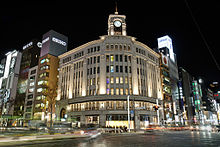
Tokyo has the largest metropolitan economy in the world. According to a study conducted by PricewaterhouseCoopers, the Tokyo urban area (37.8 million people) had a total GDP of US$1.9 trillion in 2012 (at purchasing power parity), which topped that list. 51 of the companies listed on the Fortune Global 500 are based in Tokyo, almost twice that of the second-placed city (Paris).[80]
Tokyo is a major international finance center,[81] houses the headquarters of several of the world's largest investment banks and insurance companies, and serves as a hub for Japan's transportation, publishing, electronics and broadcasting industries. During the centralised growth of Japan's economy following World War II, many large firms moved their headquarters from cities such as Osaka (the historical commercial capital) to Tokyo, in an attempt to take advantage of better access to the government. This trend has begun to slow due to ongoing population growth in Tokyo and the high cost of living there.
Tokyo was rated by the Economist Intelligence Unit as the most expensive (highest cost-of-living) city in the world for 14 years in a row ending in 2006.[82]
Tokyo emerged as a leading international financial center (IFC) in the 1960s and has been described as one of the three "command centers" for the world economy, along with New York City and London.[83] The Japanese financial market opened up slowly in 1984 and accelerated its internationalisation with the "Japanese Big Bang" in 1998.[84] Despite the emergence of Singapore and Hong Kong as competing financial centers, the Tokyo IFC manages to keep a prominent position in Asia, for now. The Tokyo Stock Exchange is Japan's largest stock exchange, and third largest in the world by market capitalization and fourth largest by share turnover. In 1990 at the end of the Japanese asset price bubble, it accounted for more than 60% of the world stock market value.[85] Tokyo had 8,460 ha (20,900 acres) of agricultural land as of 2003,[86] according to the Ministry of Agriculture, Forestry and Fisheries, placing it last among the nation's prefectures. The farmland is concentrated in Western Tokyo. Perishables such as vegetables, fruits, and flowers can be conveniently shipped to the markets in the eastern part of the prefecture. Komatsuna and spinach are the most important vegetables; as of 2000, Tokyo supplied 32.5% of the komatsuna sold at its central produce market.
With 36% of its area covered by forest, Tokyo has extensive growths of cryptomeria and Japanese cypress, especially in the mountainous western communities of Akiruno, Ōme, Okutama, Hachiōji, Hinode, and Hinohara. Decreases in the price of timber, increases in the cost of production, and advancing old age among the forestry population have resulted in a decline in Tokyo's output. In addition, pollen, especially from cryptomeria, is a major allergen for the nearby population centers. Tokyo Bay was once a major source of fish. Currently, most of Tokyo's fish production comes from the outer islands, such as Izu Ōshima and Hachijōjima. Skipjack tuna, nori, and aji are among the ocean products.
Tourism in Tokyo is also a contributor to the economy. In 2006, 4.81 million foreigners and 420 million Japanese visits to Tokyo were made; the economic value of these visits totaled 9.4 trillion yen according to the government of Tokyo. Many tourists visit the various downtowns, stores, and entertainment districts throughout the neighbourhoods of the special wards of Tokyo; particularly school children on class trips, a visit to Tokyo Tower is de rigueur. Cultural offerings include both omnipresent Japanese pop culture and associated districts such as Shibuya and Harajuku, subcultural attractions such as Studio Ghibli anime center, as well as museums like the Tokyo National Museum, which houses 37% of the country's artwork national treasures (87/233).
The Tsukiji Fish Market in central Tokyo is the biggest wholesale fish and seafood market in the world and also one of the largest wholesale food markets of any kind. The Tsukiji market holds strong to the traditions of its predecessor, the Nihombashi fish market, and serves some 50,000 buyers and sellers every day. Retailers, whole-sellers, auctioneers, and public citizens alike frequent the market, creating a unique microcosm of organized chaos that still continues to fuel the city and its food supply after over four centuries.[87]
Transportation
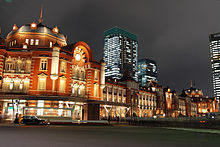
Tokyo, as the center of the Greater Tokyo Area, is Japan's largest domestic and international hub for rail, ground, and air transportation. Public transportation within Tokyo is dominated by an extensive network of clean and efficient[88] trains and subways run by a variety of operators, with buses, monorails and trams playing a secondary feeder role.
Within Ōta, one of the 23 special wards, Haneda Airport offers domestic and international flights. Outside Tokyo, Narita International Airport, in Chiba Prefecture, is the major gateway for international travelers to Japan. Japan's flag carrier Japan Airlines, as well as All Nippon Airways, Delta Air Lines, and United Airlines all have a hub at this airport.
Various islands governed by Tokyo have their own airports. Hachijō-jima (Hachijojima Airport), Miyakejima (Miyakejima Airport), and Izu Ōshima (Oshima Airport) have services to Tokyo International and other airports.
Rail is the primary mode of transportation in Tokyo, which has the most extensive urban railway network in the world and an equally extensive network of surface lines. JR East operates Tokyo's largest railway network, including the Yamanote Line loop that circles the center of downtown Tokyo. Two different organisations operate the subway network: the private Tokyo Metro and the governmental Tokyo Metropolitan Bureau of Transportation. The metropolitan government and private carriers operate bus routes and one tram route. Local, regional, and national services are available, with major terminals at the giant railroad stations, including Tokyo, Shinagawa, and Shinjuku.
Expressways link the capital to other points in the Greater Tokyo area, the Kantō region, and the islands of Kyushu and Shikoku. In order to build them quickly before the 1964 Summer Olympics, most were constructed above existing roads.[89] Other transportation includes taxis operating in the special wards and the cities and towns. Also long-distance ferries serve the islands of Tokyo and carry passengers and cargo to domestic and foreign ports.
Education
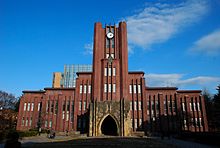
Tokyo has many universities, junior colleges, and vocational schools. Many of Japan's most prestigious universities are in Tokyo, including University of Tokyo, Hitotsubashi University, Tokyo Institute of Technology, Waseda University, and Keio University.[90] Some of the biggest national universities in Tokyo are:
- Hitotsubashi University
- National Graduate Institute for Policy Studies
- Ochanomizu University
- Tokyo Gakugei University
- Tokyo Institute of Technology
- Tokyo Medical and Dental University
- Tokyo University of Agriculture and Technology
- Tokyo University of Foreign Studies
- Tokyo University of Marine Science and Technology
- Tokyo University of the Arts
- University of Electro-Communications
- University of Tokyo
There is only one non-national public university: Tokyo Metropolitan University.
There are also a few universities well known for classes conducted in English and for the teaching of the Japanese language. They include:
- Globis University Graduate School of Management
- International Christian University
- Sophia University
- Waseda University
Tokyo is also the headquarters of the United Nations University.
For an extensive list, see List of universities in Tokyo.
Publicly run kindergartens, elementary schools (years 1 through 6), and Primary schools (7 through 9) are operated by local wards or municipal offices. Public Secondary schools in Tokyo are run by the Tokyo Metropolitan Government Board of Education and are called "Metropolitan High Schools". Tokyo also has many private schools from kindergarten through high school.
Culture
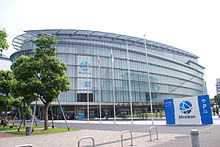
Tokyo has many museums. In Ueno Park, there is the Tokyo National Museum, the country's largest museum and specializing in traditional Japanese art; the National Museum of Western Art and Ueno Zoo. Other museums include the National Museum of Emerging Science and Innovation in Odaiba; the Edo-Tokyo Museum in Sumida, across the Sumida River from the center of Tokyo; the Nezu Museum in Aoyama; and the National Diet Library, National Archives, and the National Museum of Modern Art, which are near the Imperial Palace.
Tokyo has many theatres for performing arts. These include national and private theatres for traditional forms of Japanese drama. Noteworthy are the National Noh Theatre for noh and the Kabuki-za for kabuki.[91] Symphony orchestras and other musical organisations perform modern and traditional music. Tokyo also hosts modern Japanese and international pop and rock music at venues ranging in size from intimate clubs to internationally known arenas such as the Nippon Budokan.
Many different festivals occur throughout Tokyo. Major events include the Sannō at Hie Shrine, the Sanja at Asakusa Shrine, and the biennial Kanda Festivals. The last features a parade with elaborately decorated floats and thousands of people. Annually on the last Saturday of July, an enormous fireworks display over the Sumida River attracts over a million viewers. Once cherry blossoms bloom in spring, many residents gather in Ueno Park, Inokashira Park, and the Shinjuku Gyoen National Garden for picnics under the blossoms.
Harajuku, a neighbourhood in Shibuya, is known internationally for its youth style, fashion[92] and cosplay.
Cuisine in Tokyo is internationally acclaimed. In November 2007, Michelin released their first guide for fine dining in Tokyo, awarding 191 stars in total, or about twice as many as Tokyo's nearest competitor, Paris. Eight establishments were awarded the maximum of three stars (Paris has 10), 25 received two stars, and 117 earned one star. Of the eight top-rated restaurants, three offer traditional Japanese fine dining, two are sushi houses and three serve French cuisine.[93]
Sports
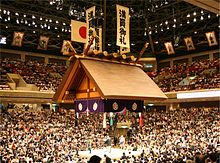
Tokyo, with a diverse array of sports, is home to two professional baseball clubs, the Yomiuri Giants who play at the Tokyo Dome and Tokyo Yakult Swallows at Meiji-Jingu Stadium. The Japan Sumo Association is also headquartered in Tokyo at the Ryōgoku Kokugikan sumo arena where three official sumo tournaments are held annually (in January, May, and September). Football clubs in Tokyo include F.C. Tokyo and Tokyo Verdy 1969, both of which play at Ajinomoto Stadium in Chōfu. Basketball clubs include the Hitachi SunRockers, Toyota Alvark Tokyo and Tokyo Excellence.
Tokyo hosted the 1964 Summer Olympics, thus becoming the first Asian city to host the Summer Games. The National Stadium, also known as the Olympic Stadium is host to a number of international sporting events. With a number of world-class sports venues, Tokyo often hosts national and international sporting events such as tennis tournaments, swim meets, marathons, rugby union and sevens rugby games, football, American football exhibition games, judo, and karate. Tokyo Metropolitan Gymnasium, in Sendagaya, Shibuya, is a large sports complex that includes swimming pools, training rooms, and a large indoor arena. According to Around the Rings, the gymnasium has played host to the October 2011 artistic gymnastics world championships, despite the International Gymnastics Federation's initial doubt in Tokyo's ability to host the championships following the March 11 tsunami.[94] Tokyo was selected to host the 2020 Summer Olympics on September 7, 2013.
In popular culture
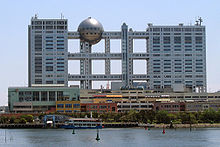
As the largest population center in Japan and the site of the country's largest broadcasters and studios, Tokyo is frequently the setting for many Japanese movies, television shows, animated series (anime), web comics, and comic books (manga). In the kaiju (monster movie) genre, landmarks of Tokyo are routinely destroyed by giant monsters such as Godzilla and Gamera.
Some Hollywood directors have turned to Tokyo as a backdrop for movies set in Japan. Well-known postwar examples include Tokyo Joe, My Geisha, Tokyo Story and the James Bond film You Only Live Twice; well-known recent examples include Kill Bill, The Fast and the Furious: Tokyo Drift, Lost in Translation, Babel, and Inception.
International relations
Tokyo is the founder member of the Asian Network of Major Cities 21 and is a member of the Council of Local Authorities for International Relations. Tokyo was also a founding member of the C40 Cities Climate Leadership Group.
Sister cities, sister states, and friendship agreements
As of 2016[update], Tokyo has twinning or friendship agreements with the following twelve cities and states: [95]
 New York City, United States (since February 1960)
New York City, United States (since February 1960) Beijing, China (since March 1979)
Beijing, China (since March 1979) Paris, France ("Friendship and cooperation agreement", since July 1982)[96]
Paris, France ("Friendship and cooperation agreement", since July 1982)[96] New South Wales, Australia (since May 1984)
New South Wales, Australia (since May 1984) Seoul, South Korea (since September 1988)
Seoul, South Korea (since September 1988) Jakarta, Indonesia (since October 1989)
Jakarta, Indonesia (since October 1989) São Paulo State, Brazil (since June 1990)
São Paulo State, Brazil (since June 1990) Cairo, Egypt (since October 1990)
Cairo, Egypt (since October 1990) Moscow, Russia (since July 1991)
Moscow, Russia (since July 1991) Berlin, Germany (since May 1994)
Berlin, Germany (since May 1994) Rome, Italy (since July 1996)
Rome, Italy (since July 1996) London, United Kingdom (since October 2015)
London, United Kingdom (since October 2015)
See also
- Largest cities in Asia
- List of cities proper by population
- List of cities with the most skyscrapers
- List of tallest structures in Tokyo
- List of development projects in Tokyo
- List of metropolitan areas in Asia
- List of most expensive cities for expatriate employees
- List of urban areas by population
- Megacity
- Tokyo dialect
- World's largest cities
- Yamanote and Shitamachi
References
- ^ "東京都歌・市歌". Tokyo Metropolitan Government. Retrieved September 17, 2011.
- ^ 都庁の所在地 Shinjuku is the location of the Tokyo Metropolitan Government Office. But Tokyo is not a "municipality". Therefore, for the sake of convenience, the notation of prefectural is "Tokyo".
- ^ "平成27年 毎月1日現在の推計". Tokyo Metropolitan Government. Retrieved January 17, 2015.
- ^ "Geography of Tokyo". Tokyo Metropolitan Government. Missing or empty
|url=(help) - ^ "Japan's Local Government System". Tokyo Metropolitan Government. Retrieved August 5, 2013.
- ^ "World Urbanization Prospects: The 2014 Revision Population Database". United Nations. Retrieved August 10, 2014.
- ^ a b Nussbaum, Louis-Frédéric. (2005). "Tōkyō" in Japan Encyclopedia, pp. 981–982, p. 981, at Google Books; "Kantō" in p. 479, p. 479, at Google Books
- ^ Fortune. "Global Fortune 500 by countries: Japan". CNN. Retrieved July 22, 2011.
- ^ "GaWC – The World According to GaWC 2008". Lboro.ac.uk. April 13, 2010. Retrieved October 29, 2010.
- ^ "Tokyo Tops Among Global Travelers, According To TripAdvisor World City Survey". TripAdvisor. TripAdvisor LLC. May 20, 2014. Retrieved September 1, 2014.
- ^ "2015 Cost of Living Rankings". Mercer. Mercer LLC. June 17, 2015. Retrieved October 17, 2015.
- ^ "Uptown top ranking". The Economist. June 17, 2015. Retrieved October 17, 2015.
- ^ "The Monocle Quality of Life Survey 2015 - Film".
- ^ (Japanese) "「ミシュランガイド東京・横浜・鎌倉2011」を発行 三つ星が14軒、二つ星が54軒、一つ星が198軒に", Michelin Japan, November 24, 2010.
- ^ "Tokyo is Michelin's biggest star". The Times. November 20, 2007.
- ^ "Safe Cities Index 2015 Infographic - NEC: Safe Cities". January 7, 2015.
- ^ "QS Best Student Cities 2016". Top Universities.
- ^ a b Room, Adrian. Placenames of the World. McFarland & Company (1996), p360. ISBN 0-7864-1814-1.
- ^ US Department of State. (1906). A digest of international law as in diplomatic discussions, treaties and other international agreements (John Bassett Moore, ed.), Volume 5, page 759; excerpt, "The Mikado, on assuming the exercise of power at Yedo, changed the name of the city to Tokio".
- ^ Fiévé, Nicolas & Paul Waley (2003). Japanese Capitals in Historical Perspective: Place, Power and Memory in Kyoto, Edo and Tokyo. p. 253.
- ^ "明治東京異聞~トウケイかトウキョウか~東京の読み方" Tokyo Metropolitan Archives (2004). Retrieved on September 13, 2008. (Japanese)
- ^ Nussbaum, "Provinces and prefectures" at p. 780, p. 780, at Google Books
- ^ McClain, James, James; et al. (1994). Edo and Paris: Urban Life and the State in the Early Modern Era. p. 13.
- ^ Sorensen, Andre (2004). The Making of Urban Japan: Cities and Planning from Edo to the Twenty First Century. p. 16.
- ^ Naitō, Akira (2003). Edo, the City That Became Tokyo: An Illustrated History. p. 33,55.
- ^ Naitō, Akira (2003). Edo, the City That Became Tokyo: An Illustrated History. p. 182,183.
- ^ Naitō, Akira (2003). Edo, the City That Became Tokyo: An Illustrated History. p. 186.
- ^ Naitō, Akira (2003). Edo, the City That Became Tokyo: An Illustrated History. p. 188.
- ^ "History of Tokyo". Tokyo Metropolitan Government. Retrieved October 17, 2007.
- ^ "Tokyo-Yokohama earthquake of 1923". Encyclopedia Britannica. Retrieved October 10, 2014.
- ^ Tipton, Elise K. (2002). Modern Japan: A Social and Political History. Routledge. p. 141. ISBN 0-585-45322-5.
- ^ "1945 Tokyo Firebombing Left Legacy of Terror, Pain". Common Dreams.
- ^ Cybriwsky, Roman (1997). Historical Dictionary of Tokyo. Lanham, MD: Scarecrow. p. 22.
- ^ Hewitt, Kenneth (1983). "Place Annihilation: Area Bombing and the Fate of Urban Places". Annals of the Association of American Geographers. 73 (2): 257–284. doi:10.1111/j.1467-8306.1983.tb01412.x.
- ^ "Tokyo Narita International Airport (NRT) Airport Information (Tokyo, Japan)". Retrieved October 10, 2014.
- ^ "Rail Transport in The World's Major Cities" (PDF). Japan Railway and Transport Review. Retrieved October 17, 2007.
- ^ Saxonhouse, Gary R. (ed.); Robert M. Stern (ed.) (2004). Japan's Lost Decade: Origins, Consequences and Prospects for Recovery. Blackwell Publishing Limited. ISBN 1-4051-1917-9.
- ^ "Shift of Capital from Tokyo Committee". Japan Productivity Center for Socio-Economic Development. Archived from the original on August 25, 2007. Retrieved October 14, 2007. [dead link]
- ^ "Policy Speech by Governor of Tokyo, Shintaro Ishihara at the First Regular Session of the Metropolitan Assembly, 2003". Tokyo Metropolitan Government. Archived from the original on November 3, 2007. Retrieved October 17, 2007.
- ^ "Despite Major Earthquake Zero Tokyo Buildings Collapsed Thanks to Stringent Building Codes". Retrieved October 11, 2011.
- ^ Williams, Carol J. (March 11, 2011). "Japan earthquake disrupts Tokyo, leaves capital only lightly damaged". http://www.latimes.com/. Retrieved October 11, 2011. External link in
|publisher=(help) - ^ "Tokyo Radiation Levels- Metropolis Magazine". Retrieved April 25, 2012.
- ^ "Tokyo radiation levels – daily updates – April". Archived from the original on August 19, 2011. Retrieved October 11, 2011.
- ^ "IOC selects Tokyo as host of 2020 Summer Olympic Games". Retrieved October 10, 2014.
- ^ "Population of Tokyo, Japan". mongabay. Retrieved February 10, 2012.
- ^ "Local Government in Japan" (PDF). Council of Local Authorities for International Relations. p. 8. Archived from the original (PDF) on September 23, 2008. Retrieved September 14, 2008.
- ^ The Structure of the Tokyo Metropolitan Government (Tokyo government webpage)
- ^ Population of Tokyo – Tokyo Metropolitan Government (Retrieved on July 4, 2009)
- ^ "PRAY FOR TOKYO: CHIYODA". Karis Japan. Retrieved April 20, 2015.
- ^ "Development of the Metropolitan Centre, Subcentres and New Base". Bureau of Urban Development, Tokyo Metropolitan Government. Retrieved October 14, 2007.
- ^ "General overview of area figures for Natural Parks by prefecture" (PDF). Ministry of the Environment. Retrieved February 8, 2012.
- ^ "A New 1649–1884 Catalog of Destructive Earthquakes near Tokyo and Implications for the Long-term Seismic Process" (PDF). U.S. Geological Survey. Retrieved October 14, 2007.
- ^ "A new probabilistic seismic hazard assessment for greater Tokyo" (PDF). U.S. Geological Survey. Retrieved October 14, 2007.
- ^ Peel, M. C., Finlayson, B. L., and McMahon, T. A.: Updated world map of the Köppen-Geiger climate classification, Hydrol. Earth Syst. Sci., 11, 1633–1644, 2007.
- ^ "Extreme temperatures around the world". Herrera, Maximiliano. Retrieved December 3, 2011.
- ^ "Tokyo observes latest ever 1st snowfall". Tokyo. Kyodo News. March 16, 2005. Archived from the original on March 19, 2007. Retrieved October 18, 2008. [dead link]
- ^ a b Barry, Roger Graham & Richard J. Chorley. Atmosphere, Weather and Climate. Routledge (2003), p344. ISBN 0-415-27170-3.
- ^ 気象庁 Japan Meteorological Agency. "観測史上1~10位の値(年間を通じての値)". Data.jma.go.jp. Retrieved December 4, 2011.
- ^ 気象庁 Japan Meteorological Agency. "観測史上1~10位の値(10月としての値)". Data.jma.go.jp. Retrieved December 4, 2011.
- ^ The JMA Tokyo, Tokyo (東京都 東京) station is at 35°41.4′N 139°45.6′E, JMA: 気象統計情報>過去の気象データ検索>都道府県の選択>地点の選択
- ^ 気象庁 / 平年値(年・月ごとの値) (in Japanese). Japan Meteorological Agency. Retrieved December 16, 2014.
- ^ 気象庁 / 平年値(年・月ごとの値) (in Japanese). Japan Meteorological Agency. Retrieved December 16, 2014.
- ^ 観測史上1~10位の値( 年間を通じての値) (in Japanese). Japan Meteorological Agency. Retrieved December 16, 2014.
- ^ "気象庁 / 気象統計情報 / 過去の気象データ検索 / 平年値(年・月ごとの値)". Japan Meteorological Agency. Retrieved June 24, 2013.
- ^ "気象庁|過去の気象データ検索". jma.go.jp.
- ^ "気象統計情報 / 天気予報・台風 / 過去の台風資料 / 台風の統計資料 / 台風の平年値". Japan Meteorological Agency.
- ^ a b Hidenobu Jinnai. Tokyo: A Spatial Anthropology. University of California Press (1995), p1-3. ISBN 0-520-07135-2.
- ^ "Tokyo – GoJapanGo". Tokyo Attractions – Japanese Lifestyle. Mi Marketing Pty Ltd. Retrieved April 18, 2012.
- ^ "World Business Council for Sustainable Development (WBCSD)". Wbcsd.org. Archived from the original on January 4, 2009. Retrieved October 18, 2008.
- ^ Toshiaki Ichinose, Kazuhiro Shimodozono, and Keisuke Hanaki. Impact of anthropogenic heat on urban climate in Tokyo. Atmospheric Environment 33 (1999): 3897–3909.
- ^ "Heat Island Control Measures". .kankyo.metro.tokyo.jp. January 6, 2007. Retrieved October 29, 2010.
- ^ Barry, Roger Graham; Chorley, Richard J. Atmosphere, Weather and Climate. London: Methuen Publishing. p. 344. ISBN 0-416-07152-X.
- ^ http://www.metro.tokyo.jp/ENGLISH/PLAN/DATA/10yearplan_data_4.pdf
- ^ "2012 Action Program for Tokyo Vision 2020 – Tokyo Metropolitan Government". Metro.tokyo.jp. Retrieved December 23, 2012.
- ^ "東京都の人口(推計)". 東京都. Retrieved January 17, 2015.
- ^ a b "Population of Tokyo". Tokyo Metropolitan Government. Archived from the original on December 23, 2008. Retrieved January 1, 2009.
- ^ 東京府 編 (1890). 東京府統計書. 明治22年 [Tōkyō-Fu Statistics Book (1889)] (in Japanese). 1. 東京府. pp. 40–41. (National Diet Library Digital Archive) (digital page number 32)
- ^ 東京府 編 (1890). 東京府統計書. 明治22年 [Tōkyō-Fu Statistics Book (1889)] (in Japanese). 1. 東京府. pp. 66–67. (National Diet Library Digital Archive) (digital page number 46)
- ^ "Tokyo Statistical Yearbook 2012, Population: 2–4 Foreign Residents by District and Nationality (Year-End Data 2008–2012)" (Excel 97). Bureau of General Affairs, Tokyo Metropolitan Government. Retrieved January 27, 2015.
- ^ "Global 500 Our annual ranking of the world's largest corporationns". CNNMoney.com. Retrieved December 4, 2008.
- ^ "Financial Centres, All shapes and sizes". The Economist. September 13, 2007. Retrieved October 14, 2007.
- ^ "Oslo is world's most expensive city: survey". Reuters. January 31, 2006. Retrieved February 1, 2007. [dead link]
- ^ Sassen, Saskia (2001). The Global City: New York, London, Tokyo (2nd ed.). Princeton University Press. ISBN 0-691-07063-6.
- ^ Takatoshi Ito, Michael Melvin (July 1999). "NBER" (PDF). National Bureau of Economic Research. Retrieved October 16, 2016.
- ^ "Tokyo stock exchange". Stock-market.in. Archived from the original on October 5, 2008. Retrieved October 29, 2010.
- ^ Horticulture Statistics Team, Production Statistics Division, Statistics and Information Department, Ministry of Agriculture, Forestry and Fisheries (July 15, 2003). "Statistics on Cultivated Land Area" (PDF). Archived from the original (PDF) on June 24, 2008. Retrieved October 18, 2008. CS1 maint: Multiple names: authors list (link)[dead link]
- ^ Hannerz, Ulf (2005). "The Fish Market at the Center of the World (Review)". The Journal of Japanese Studies. 31 (2): 428–31. doi:10.1353/jjs.2005.0044.
- ^ "A Country Study: Japan". The Library of Congress. pp. Chapter 2, Neighbourhoods. Retrieved October 24, 2007.
- ^ "Revamping Tokyo's expressways could give capital a boost". Yomiuri Shimbun. Retrieved October 8, 2012. [dead link]
- ^ "The Times Higher Education – QS World University Rankings 2008". QS Quacquarelli Symonds Limited. Archived from the original on December 2, 2008. Retrieved November 11, 2008.
- ^ Milner, Rebecca (2013). "Pocket Tokyo." 4th Edition. Lonely Planet Publications. ISBN 978-1-74220-581-6
- ^ Perry, Chris (April 25, 2007). "Rebels on the Bridge: Subversion, Style, and the New Subculture" (Flash). Self-published (Scribd). Retrieved December 4, 2007.
- ^ "Tokyo 'top city for good eating'". BBC NEWS. November 20, 2007. Retrieved October 18, 2008.
- ^ "Tokyo Keeps Gymnastics Worlds, Bolsters Olympics Ambitions". Aroundtherings.com. May 23, 2011. Archived from the original on June 1, 2012. Retrieved December 23, 2012.
- ^ "Sister Cities (States) of Tokyo – Tokyo Metropolitan Government". Retrieved May 30, 2016.
- ^ "Friendship and cooperation agreements". Paris: Marie de Paris. Archived from the original on 2016-04-03. Retrieved 2016-09-10. [dead link]
Bibliography
- Fiévé, Nicolas and Paul Waley. (2003). Japanese Capitals in Historical Perspective: Place, Power and Memory in Kyoto, Edo and Tokyo. London: RoutledgeCurzon. ISBN 9780700714094; OCLC 51527561
- McClain, James, John M Merriman and Kaoru Ugawa. (1994). Edo and Paris: Urban Life and the State in the Early Modern Era. Ithaca: Cornell University Press. ISBN 9780801429873; OCLC 30157716
- Nussbaum, Louis-Frédéric and Käthe Roth. (2005). Japan encyclopedia. Cambridge: Harvard University Press. ISBN 978-0-674-01753-5; OCLC 58053128
- Sorensen, Andre. (2002). The Making of Urban Japan: Cities and Planning from Edo to the Twenty First Century. London: RoutledgeCurzon. ISBN 9780415226516; OCLC 48517502
Further reading
Guides
- Bender, Andrew, and Timothy N. Hornyak. Tokyo (City Travel Guide) (2010)
- Mansfield, Stephen. Dk Eyewitness Top 10 Travel Guide: Tokyo (2013)
- Waley, Paul. Tokyo Now and Then: An Explorer's Guide. (1984). 592 pp
- Yanagihara, Wendy. Lonely Planet Tokyo Encounter (2012)
Contemporary
- Allinson, Gary D. Suburban Tokyo: A Comparative Study in Politics and Social Change. (1979). 258 pp.
- Bestor, Theodore. Neighbourhood Tokyo (1989). online edition
- Bestor, Theodore. Tsukiji: The Fish Market at the Centre of the World. (2004) online edition
- Fowler, Edward. San'ya Blues: Labouring Life in Contemporary Tokyo. ( 1996) ISBN 0-8014-8570-3.
- Friedman, Mildred, ed. Tokyo, Form and Spirit. (1986). 256 pp.
- Jinnai, Hidenobu. Tokyo: A Spatial Anthropology. (1995). 236 pp.
- Reynolds, Jonathan M. "Japan's Imperial Diet Building: Debate over Construction of a National Identity". Art Journal. 55#3 (1996) pp 38+.
- Sassen, Saskia. The Global City: New York, London, Tokyo. (1991). 397 pp.
- Sorensen, A. Land Readjustment and Metropolitan Growth: An Examination of Suburban Land Development and Urban Sprawl in the Tokyo Metropolitan Area (2000)
- Waley, Paul. "Tokyo-as-world-city: Reassessing the Role of Capital and the State in Urban Restructuring". Urban Studies 2007 44(8): 1465–1490. ISSN 0042-0980 Fulltext: Ebsco
External links
| Definitions from Wiktionary | |
| Media from Commons | |
| News from Wikinews | |
| Textbooks from Wikibooks | |
| Travel guide from Wikivoyage | |
| State of New York | |||||
|---|---|---|---|---|---|
|
|||||
| Nickname(s): The Empire State | |||||
| Motto(s): Excelsior (Latin)[1] Ever upward |
|||||
| State song(s): "I Love New York" | |||||
| Official language | None | ||||
| Spoken languages | |||||
| Demonym | New Yorker | ||||
| Capital | Albany | ||||
| Largest city | New York City | ||||
| Largest metro | New York City metropolitan area | ||||
| Area | Ranked 27th | ||||
| • Total | 54,555[3] sq mi (141,300 km2) |
||||
| • Width | 285 miles (455 km) | ||||
| • Length | 330 miles (530 km) | ||||
| • % water | 13.5 | ||||
| • Latitude | 40° 30′ N to 45° 1′ N | ||||
| • Longitude | 71° 51′ W to 79° 46′ W | ||||
| Population | Ranked 4th | ||||
| • Total | 19,795,791 (2015 est)[4] | ||||
| • Density | 416.42/sq mi (159/km2) Ranked 7th |
||||
| Elevation | |||||
| • Highest point | Mount Marcy[5][6][7] 5,344 ft (1,629 m) |
||||
| • Mean | 1,000 ft (300 m) | ||||
| • Lowest point | Atlantic Ocean[6][7] sea level |
||||
| Admission to Union | July 26, 1788 (11th) | ||||
| Governor | Andrew Cuomo (D) | ||||
| Lieutenant Governor | Kathy Hochul (D) | ||||
| Legislature | New York Legislature | ||||
| • Upper house | State Senate | ||||
| • Lower house | State Assembly | ||||
| U.S. Senators | Chuck Schumer (D) Kirsten Gillibrand (D) |
||||
| U.S. House delegation | 18 Democrats, 9 Republicans (list) |
||||
| Time zone | Eastern: UTC -5/-4 | ||||
| ISO 3166 | US-NY | ||||
| Abbreviations | NY | ||||
| Website | www |
||||
| New York state symbols | |
|---|---|
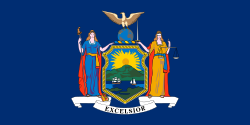
The Flag of New York
|
|
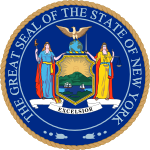
The Seal of New York
|
|
| Living insignia | |
| Bird | Eastern bluebird |
| Fish | Brook trout (fresh water), Striped bass (salt water) |
| Flower | Rose |
| Insect | Nine-spotted ladybug |
| Mammal | Beaver |
| Reptile | Common snapping turtle |
| Tree | Sugar maple |
| Inanimate insignia | |
| Beverage | Milk |
| Fossil | Eurypterus remipes |
| Gemstone | Garnet |
| Motto | Excelsior |
| Shell | Bay scallop |
| Song | "I Love New York" |
| State route marker | |
 |
|
| State quarter | |

Released in 2001
|
|
| Lists of United States state symbols | |
New York is a state in the Northeastern United States and is the 27th-most extensive, fourth-most populous, and seventh-most densely populated U.S. state. New York is bordered by New Jersey and Pennsylvania to the south and Connecticut, Massachusetts, and Vermont to the east. The state has a maritime border in the Atlantic Ocean with Rhode Island, east of Long Island, as well as an international border with the Canadian provinces of Quebec to the north and Ontario to the west and north. The state of New York, with an estimated 19.8 million residents in 2015,[4] is often referred to as New York State to distinguish it from New York City, the state's most populous city and its economic hub.
With an estimated population of 8.55 million in 2015,[8] New York City is the most populous city in the United States and the premier gateway for legal immigration to the United States.[9][10][11] The New York City Metropolitan Area is one of the most populous urban agglomerations in the world.[12][13] New York City is a global city,[14] exerting a significant impact upon commerce, finance, media, art, fashion, research, technology, education, and entertainment, its fast pace[15] defining the term New York minute.[16] The home of the United Nations Headquarters,[17] New York City is an important center for international diplomacy[18] and has been described as the cultural and financial capital of the world,[19][20][21][22][23] as well as the world's most economically powerful city.[24][23][25] New York City makes up over 40% of the population of New York State. Two-thirds of the state's population lives in the New York City Metropolitan Area, and nearly 40% lives on Long Island.[8] Both the state and New York City were named for the 17th-century Duke of York, future King James II of England. The next four most populous cities in the state are Buffalo, Rochester, Yonkers, and Syracuse, while the state capital is Albany.
New York had been inhabited by tribes of Algonquian and Iroquoian-speaking Native Americans for several hundred years by the time the earliest Europeans came to New York. The first Europeans to arrive were French colonists and Jesuit missionaries who arrived southward from settlements at Montreal for trade and proselytizing. In 1609, the region was claimed by Henry Hudson for the Dutch, who built Fort Nassau in 1614 at the confluence of the Hudson and Mohawk rivers, where the present-day capital of Albany later developed. The Dutch soon also settled New Amsterdam and parts of the Hudson Valley, establishing the colony of New Netherland, a multicultural community from its earliest days and a center of trade and immigration. The British annexed the colony from the Dutch in 1664. The borders of the British colony, the Province of New York, were similar to those of the present-day state.
Many landmarks in New York are well known to both international and domestic visitors, with New York State hosting four of the world's ten most-visited tourist attractions in 2013: Times Square, Central Park, Niagara Falls (shared with Ontario), and Grand Central Terminal.[26] New York is home to the Statue of Liberty, a symbol of the United States and its ideals of freedom, democracy, and opportunity.[27] In the 21st century, New York has emerged as a global node of creativity and entrepreneurship,[28] social tolerance,[29] and environmental sustainability.[30][31] New York's higher education network comprises approximately 200 colleges and universities, including Columbia University, Cornell University, New York University, and Rockefeller University, which have been ranked among the top 35 in the world.[32][33]
Contents
History
16th century
In 1524, Giovanni da Verrazzano, an Italian explorer in the service of the French crown, explored the Atlantic coast of North America between the Carolinas and Newfoundland, including New York Harbor and Narragansett Bay. On April 17, 1524 Verrazanno entered New York Bay, by way of the Strait now called the Narrows into the northern bay which he named Santa Margherita, in honor of the King of France's sister. Verrazzano described it as "a vast coastline with a deep delta in which every kind of ship could pass" and he adds: "that it extends inland for a league and opens up to form a beautiful lake. This vast sheet of water swarmed with native boats". He landed on the tip of Manhattan and perhaps on the furthest point of Long Island. Verrazanno's stay in this place was interrupted by a storm which pushed him north towards Martha's Vineyard.[34]
In 1540 French traders from New France built a chateau on Castle Island, within present-day Albany; due to flooding, it was abandoned the next year. In 1614, the Dutch under the command of Hendrick Corstiaensen, rebuilt the French chateau, which they called Fort Nassau. Fort Nassau was the first Dutch settlement in North America, and was located along the Hudson River, also within present-day Albany. The small fort served as a trading post and warehouse. Located on the Hudson River flood plain, the rudimentary "fort" was washed away by flooding in 1617,[35] and abandoned for good after Fort Orange (New Netherland) was built nearby in 1623.[36]
17th century
Henry Hudson's 1609 voyage marked the beginning of European involvement with the area. Sailing for the Dutch East India Company and looking for a passage to Asia, he entered the Upper New York Bay on September 11 of that year.[37] Word of his findings encouraged Dutch merchants to explore the coast in search for profitable fur trading with local Native American tribes.
During the 17th century, Dutch trading posts established for the trade of pelts from the Lenape, Iroquois, and other tribes were founded in the colony of New Netherland. The first of these trading posts were Fort Nassau (1614, near present-day Albany); Fort Orange (1624, on the Hudson River just south of the current city of Albany and created to replace Fort Nassau), developing into settlement Beverwijck (1647), and into what became Albany; Fort Amsterdam (1625, to develop into the town New Amsterdam which is present-day New York City); and Esopus, (1653, now Kingston). The success of the patroonship of Rensselaerswyck (1630), which surrounded Albany and lasted until the mid-19th century, was also a key factor in the early success of the colony. The English captured the colony during the Second Anglo-Dutch War and governed it as the Province of New York. The city of New York was recaptured by the Dutch in 1673 during the Third Anglo-Dutch War (1672–1674) and renamed New Orange. It was returned to the English under the terms of the Treaty of Westminster a year later.[38]
18th century, the American Revolution, and statehood
The Sons of Liberty were organized in New York City during the 1760s, largely in response to the oppressive Stamp Act passed by the British Parliament in 1765. The Stamp Act Congress met in the city on October 19 of that year, composed of representatives from across the Thirteen Colonies who set the stage for the Continental Congress to follow. The Stamp Act Congress resulted in the Declaration of Rights and Grievances, which was the first written expression by representatives of the Americans of many of the rights and complaints later expressed in the United States Declaration of Independence. This included the right to representative government. At the same time, with strong trading between Britain and the United States on both business and personal levels many New York residents were Loyalists. The Capture of Fort Ticonderoga provided the cannon and gunpowder necessary to force a British withdrawal from the Siege of Boston in 1775.
New York was the only colony to not vote for independence, as the delegates were not authorized to do so. New York then endorsed the Declaration of Independence on July 9, 1776.[39] The New York State Constitution was framed by a convention which assembled at White Plains on July 10, 1776, and after repeated adjournments and changes of location, terminated its labors at Kingston on Sunday evening, April 20, 1777, when the new constitution drafted by John Jay was adopted with but one dissenting vote. It was not submitted to the people for ratification. On July 30, 1777, George Clinton was inaugurated as the first Governor of New York at Kingston.
About one-third of the battles of the American Revolutionary War took place in New York; the first major battle after U.S. independence was declared—and the largest battle of the entire war—was fought in New York at the Battle of Long Island (a.k.a. Battle of Brooklyn) in August 1776. After their victory, the British occupied New York City, making it their military and political base of operations in North America for the duration of the conflict, and consequently the focus of General George Washington's intelligence network. On the notorious British prison ships of Wallabout Bay, more American combatants died of intentional neglect than were killed in combat in every battle of the war, combined. Both sides of combatants lost more soldiers to disease than to outright wounds.The first of two major British armies were captured by the Continental Army at the Battle of Saratoga in 1777, a success that influenced France to ally with the revolutionaries.The state constitution was enacted in 1777. New York became the 11th state to ratify the United States Constitution, on July 26, 1788.
| Preceded by Virginia |
List of U.S. states by date of statehood Ratified Constitution on July 26, 1788 (11th) |
Succeeded by North Carolina |
In an attempt to retain their sovereignty and remain an independent nation positioned between the new United States and British North America, four of the Iroquois Nations fought on the side of the British; only the Oneida and their dependents, the Tuscarora, allied themselves with the Americans.[40] In retaliation for attacks on the frontier led by Joseph Brant and Loyalist Mohawk forces, the Sullivan Expedition of 1779 destroyed nearly 50 Iroquois villages, adjacent croplands and winter stores, forcing many refugees to British-held Niagara.[41]
As allies of the British, the Iroquois were forced out of New York, although they had not been part of treaty negotiations. They resettled in Canada after the war and were given land grants by the Crown. In the treaty settlement, the British ceded most Indian lands to the new United States. Because New York made treaty with the Iroquois without getting Congressional approval, some of the land purchases have been subject to land claim suits since the late 20th century by the federally recognized tribes. New York put up more than 5 million acres (20,000 km2) of former Iroquois territory for sale in the years after the Revolutionary War, leading to rapid development in upstate New York.[42] As per the Treaty of Paris, the last vestige of British authority in the former Thirteen Colonies—their troops in New York City—departed in 1783, which was long afterward celebrated as Evacuation Day.[43]
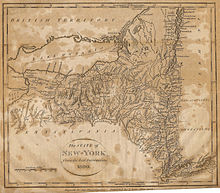
New York City was the national capital under the Articles of Confederation and Perpetual Union, the first government. That organization was found to be insufficient, and prominent New Yorker Alexander Hamilton advocated a new government that would include an executive, national courts, and the power to tax. Hamilton led the Annapolis Convention (1786) that called for the Philadelphia Convention, which drafted the United States Constitution, in which he also took part. The new government was to be a strong federal national government to replace the relatively weaker confederation of individual states. Following heated debate, which included the publication of the now quintessential constitutional interpretation—The Federalist Papers—as a series of installments in New York City newspapers, New York was the 11th state to ratify the United States Constitution, on July 26, 1788.[44] New York remained the national capital under the new constitution until 1790, and was the site of the inauguration of President George Washington, the drafting of United States Bill of Rights, and the first session of the United States Supreme Court. Hamilton's revival of the heavily indebted United States economy after the war and the creation of a national bank significantly contributed to New York City becoming the financial center of the new nation.
Both the Dutch and the British imported African slaves as laborers to the city and colony; New York had the second-highest population of slaves after Charleston, SC. Slavery was extensive in New York City and some agricultural areas. The state passed a law for the gradual abolition of slavery soon after the Revolutionary War, but the last slave in New York was not freed until 1827.
19th century
Transportation in western New York was by expensive wagons on muddy roads before canals opened up the rich farm lands to long-distance traffic. Governor DeWitt Clinton promoted the Erie Canal that connected New York City to the Great Lakes, by the Hudson River, the new canal, and the rivers and lakes. Work commenced in 1817, and the Erie Canal opened in 1825. Packet boats pulled by horses on tow paths traveled slowly over the canal carrying passengers and freight.[45] Farm products came in from the Midwest, and finished manufactured moved west. It was an engineering marvel which opened up vast areas of New York to commerce and settlement. It enabled Great Lakes port cities such as Buffalo and Rochester to grow and prosper. It also connected the burgeoning agricultural production of the Midwest and shipping on the Great Lakes, with the port of New York City. Improving transportation, it enabled additional population migration to territories west of New York. After 1850, railroads largely replaced the canal.[46]
New York City was a major ocean port and had extensive traffic importing cotton from the South and exporting manufacturing goods. Nearly half of the state's exports were related to cotton. Southern cotton factors, planters and bankers visited so often that they had favorite hotels.[47] At the same time, activism for abolitionism was strong upstate, where some communities provided stops on the Underground Railroad. Upstate, and New York City, gave strong support for the American Civil War In terms of finances, volunteer soldiers, and supplies. The state provided more than 370,000 soldiers to the Union armies. Over 53,000 New Yorkers died in service, roughly one of every seven who served. However, Irish draft riots in 1862 were a significant embarrassment.[48][49]
Immigration
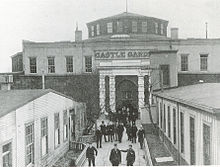
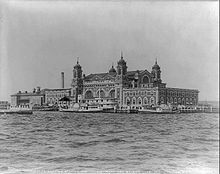
Since the early 19th century, New York City has been the largest port of entry for legal immigration into the United States. In the United States, the federal government did not assume direct jurisdiction for immigration until 1890. Prior to this time, the matter was delegated to the individual states, then via contract between the states and the federal government. Most immigrants to New York would disembark at the bustling docks along the Hudson and East Rivers, in the eventual Lower Manhattan. On May 4, 1847 the New York State Legislature created the Board of Commissioners of Immigration to regulate immigration.[50]
The first permanent immigration depot in New York was established in 1855 at Castle Garden, a converted War of 1812 era fort located within what is now Battery Park, at the tip of Lower Manhattan. The first immigrants to arrive at the new depot were aboard three ships that had just been released from quarantine. Castle Garden served as New York's immigrant depot until it closed on April 18, 1890 when the federal government assumed control over immigration. During that period, more than 8 million immigrants passed through its doors (two out of every three U.S. immigrants).[51]
When the federal government assumed control, it established the Bureau of Immigration, which chose the three-acre Ellis Island in Upper New York Harbor for an entry depot. Already federally controlled, the island had served as an ammunition depot. It was chosen due its relative isolation with proximity to New York City and the rail lines of Jersey City, New Jersey, via a short ferry ride. While the island was being developed and expanded via land reclamation, the federal government operated a temporary depot at the Barge Office at the Battery.[52]
Ellis Island opened on January 1, 1892, and operated as a central immigration center until the National Origins Act was passed in 1924, reducing immigration. After that date, the only immigrants to pass through were displaced persons or war refugees. The island ceased all immigration processing on November 12, 1954 when the last person detained on the island, Norwegian seaman Arne Peterssen, was released. He had overstayed his shore leave and left on the 10:15 a.m. Manhattan-bound ferry to return to his ship.
More than 12 million immigrants passed through Ellis Island between 1892 and 1954. More than 100 million Americans across the United States can trace their ancestry to these immigrants.
Ellis Island was the subject of a contentious and long-running border and jurisdictional dispute between New York State and the State of New Jersey, as both claimed it. The issue was settled in 1998 by the U.S. Supreme Court which ruled that the original 3.3-acre (1.3 ha) island was New York State territory and that the balance of the 27.5 acres (11 ha) added after 1834 by landfill was in New Jersey.[53] The island was added to the National Park Service system in May 1965 by President Lyndon B. Johnson and is still owned by the Federal government as part of the Statue of Liberty National Monument. Ellis Island was opened to the public as a museum of immigration in 1990.[54]
September 11, 2001 attacks
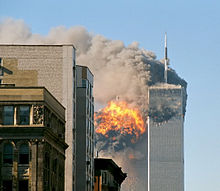
On September 11, 2001, two of four hijacked planes were flown into the Twin Towers of the original World Trade Center in Lower Manhattan, and the towers collapsed. 7 World Trade Center also collapsed due to damage from fires. The other buildings of the World Trade Center complex were damaged beyond repair and demolished soon thereafter. The collapse of the Twin Towers caused extensive damage and resulted in the deaths of 2,753 victims, including 147 aboard the two planes. Since September 11, most of Lower Manhattan has been restored. In the years since, many rescue workers and residents of the area have developed several life-threatening illnesses, and some have already died.[55]
A memorial at the site was opened to the public on September 11, 2011. A permanent museum later opened at the site on March 21, 2014. Upon its completion in 2014, the new One World Trade Center became the tallest skyscraper in the Western Hemisphere, at 1,776 feet (541 m).[56] Other skyscrapers are under construction at the site.
Hurricane Sandy, 2012
On October 29 and 30, 2012, Hurricane Sandy caused extensive destruction of the state's shorelines, ravaging portions of New York City and Long Island with record-high storm surge, with severe flooding and high winds causing power outages for hundreds of thousands of New Yorkers, and leading to gasoline shortages and disruption of mass transit systems. The storm and its profound effects have prompted the discussion of constructing seawalls and other coastal barriers around the shorelines of New York City and Long Island to minimize the risk from another such future event. This is considered highly probable due to global warming and rise in sea levels.[58][59]
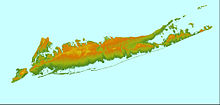
Geography
New York covers 54,555 square miles (141,300 km2) and ranks as the 27th largest state by size.[3] The Great Appalachian Valley dominates eastern New York and contains the Lake Champlain Valley as its northern half and the Hudson Valley as its southern half within the state. The rugged Adirondack Mountains, with vast tracts of wilderness, lie west of the Lake Champlain Valley. The Hudson River begins near Lake Tear of the Clouds and flows south through the eastern part of the state without draining Lakes George or Champlain. Lake George empties at its north end into Lake Champlain, whose northern end extends into Canada, where it drains into the Richelieu River and then ultimately the Saint Lawrence River. Four of New York City's five boroughs are situated on three islands at the mouth of the Hudson River: Manhattan Island; Staten Island; and Long Island, which contains Brooklyn and Queens at its western end.
Most of the southern part of the state rests on the Allegheny Plateau, which extends from the southeastern United States to the Catskill Mountains; the section in New York State is known as the Southern Tier. The Tug Hill region arises as a cuesta east of Lake Ontario. The western section of the state is drained by the Allegheny River and rivers of the Susquehanna and Delaware River systems. The Delaware River Basin Compact, signed in 1961 by New York, New Jersey, Pennsylvania, Delaware, and the federal government, regulates the utilization of water of the Delaware system. The highest elevation in New York is Mount Marcy in the Adirondacks, at 5,344 feet (1,629 meters) above sea level; while the state's lowest point is at sea level, on the Atlantic Ocean.[60]
Much of New York State borders water, as is true for New York City as well. Of New York State's total area, 13.5% consists of water. The state's borders touch (clockwise from the west) two Great Lakes (Lake Erie and Lake Ontario, which are connected by the Niagara River); the provinces of Ontario and Quebec in Canada, with New York and Ontario sharing the Thousand Islands archipelago within the Saint Lawrence River; Lake Champlain; three New England states (Vermont, Massachusetts, and Connecticut); the Atlantic Ocean, and two Mid-Atlantic states, New Jersey and Pennsylvania. In addition, Rhode Island shares a water border with New York. New York is the second largest of the original Thirteen Colonies and is the only state that touches both the Great Lakes and the Atlantic Ocean.
In contrast with New York City's urban landscape, the vast majority of the state's geographic area is dominated by meadows, forests, rivers, farms, mountains, and lakes. New York's Adirondack Park is the largest state park in the United States and is larger than the Yellowstone, Yosemite, Grand Canyon, Glacier, and Olympic National Parks combined.[61] New York established the first state park in the United States at Niagara Falls in 1885. Niagara Falls is shared between New York and Ontario as it flows on the Niagara River from Lake Erie to Lake Ontario.
Upstate and downstate are often used informally to distinguish New York City or its greater metropolitan area from the rest of New York State. The placement of a boundary between the two is a matter of great contention.[62] Unofficial and loosely defined regions of Upstate New York include the Southern Tier, which often includes the counties along the border with Pennsylvania,[63] and the North Country, which can mean anything from the strip along the Canada–US border to everything north of the Mohawk River.[64]
Climate
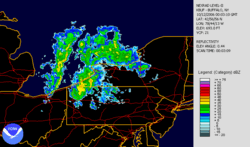
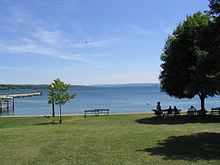
In general, New York has a humid continental climate, though under the Köppen climate classification, New York City has a humid subtropical climate.[65] Weather in New York is heavily influenced by two continental air masses: a warm, humid one from the southwest and a cold, dry one from the northwest.
Downstate New York, comprising New York City, Long Island, and lower portions of the Hudson Valley, has rather warm summers, with some periods of high humidity, and cold, damp winters which, however, are relatively mild compared to temperatures in Upstate New York, secondary to the former region's lower elevation, proximity to the Atlantic Ocean, and relatively lower latitude compared to the latter. Upstate New York experiences warm summers, marred by only occasional, brief intervals of sultry conditions, with long and cold winters. Western New York, particularly the Tug Hill region, receives heavy lake-effect snows, especially during the earlier portions of winter, before the surface of Lake Ontario itself is covered by ice. The summer climate is cool in the Adirondacks, Catskills, and at higher elevations of the Southern Tier.
Summer daytime temperatures usually range from the upper 70s to mid-80s °F (25 to 30 °C), over much of the state. In the majority of winter seasons, a temperature of −13 °F (−25 °C) or lower can be expected in the northern highlands (Northern Plateau) and 5 °F (−15 °C) or colder in the southwestern and east-central highlands of the Southern Tier.
New York ranks 46th among the 50 states in the amount of greenhouse gases generated per person. This relative efficient energy usage is primarily due to the dense, compact settlement in the New York City metropolitan area, and the state population's high rate of mass transit use in this area and between major cities.[66]
| City | Jan | Feb | Mar | Apr | May | Jun | Jul | Aug | Sep | Oct | Nov | Dec | |
|---|---|---|---|---|---|---|---|---|---|---|---|---|---|
| Albany | max min |
31 13 |
34 16 |
44 25 |
57 36 |
70 46 |
78 55 |
82 60 |
80 58 |
71 50 |
60 39 |
48 31 |
36 20 |
| Binghamton | max min |
28 15 |
31 17 |
41 25 |
53 35 |
66 46 |
73 54 |
78 59 |
76 57 |
68 50 |
57 40 |
44 31 |
33 21 |
| Buffalo | max min |
31 18 |
33 19 |
42 26 |
54 36 |
66 48 |
75 57 |
80 62 |
78 60 |
70 53 |
59 43 |
47 34 |
36 24 |
| Lake Placid | max min |
27 5 |
32 8 |
40 16 |
54 29 |
66 39 |
74 48 |
78 53 |
76 51 |
69 44 |
56 34 |
44 25 |
32 12 |
| Long Beach | max min |
39 23 |
40 24 |
48 31 |
58 40 |
69 49 |
77 60 |
83 66 |
82 64 |
75 57 |
64 45 |
54 36 |
44 28 |
| New York City | max min |
38 26 |
41 28 |
50 35 |
61 44 |
71 54 |
79 63 |
84 69 |
82 68 |
75 60 |
64 50 |
53 41 |
43 32 |
| Rochester | max min |
31 17 |
33 17 |
43 25 |
55 35 |
68 46 |
77 55 |
81 60 |
79 59 |
71 51 |
60 41 |
47 33 |
36 23 |
| Syracuse | max min |
31 14 |
34 16 |
43 24 |
56 35 |
68 46 |
77 55 |
82 60 |
80 59 |
71 51 |
60 40 |
47 32 |
36 21 |
| City | Jan | Feb | Mar | Apr | May | Jun | Jul | Aug | Sep | Oct | Nov | Dec | |
|---|---|---|---|---|---|---|---|---|---|---|---|---|---|
| Albany | max min |
−1 −11 |
1 −9 |
7 −4 |
14 2 |
21 8 |
26 13 |
28 16 |
27 14 |
22 10 |
16 4 |
9 −1 |
2 −7 |
| Binghamton | max min |
−2 −9 |
−1 −8 |
5 −4 |
12 2 |
19 8 |
23 12 |
26 15 |
24 14 |
20 10 |
14 4 |
7 −1 |
1 −6 |
| Buffalo | max min |
−1 −8 |
1 −7 |
6 −3 |
12 2 |
19 9 |
24 14 |
27 17 |
26 16 |
21 12 |
15 6 |
8 1 |
2 −4 |
| Lake Placid | max min |
−3 −15 |
0 −13 |
4 −9 |
12 −2 |
19 4 |
23 9 |
26 12 |
24 11 |
21 7 |
13 1 |
7 −4 |
0 −11 |
| Long Beach | max min |
4 −5 |
4 −4 |
9 −1 |
14 4 |
21 9 |
25 16 |
28 19 |
28 18 |
24 14 |
18 7 |
12 2 |
7 −2 |
| New York City | max min |
3 −3 |
5 −2 |
10 2 |
16 7 |
22 12 |
26 17 |
29 21 |
28 20 |
24 16 |
18 10 |
12 5 |
6 0 |
| Rochester | max min |
−1 −8 |
1 −8 |
6 −4 |
13 2 |
20 8 |
25 13 |
27 16 |
26 15 |
22 11 |
16 5 |
8 1 |
2 −5 |
| Syracuse | max min |
−1 −10 |
1 −9 |
6 −4 |
13 2 |
20 8 |
25 13 |
28 16 |
27 15 |
22 11 |
16 4 |
8 0 |
2 −6 |
| Converted from Fahrenheit data (above) | |||||||||||||
Statescape
Regions
Due to its long history, the state of New York has several overlapping (and often conflicting) definitions of regions within the state. This is further exacerbated by the colloquial use of such regional labels. The New York State Department of Economic Development provides two distinct definitions of these regions. The department divides the state into ten economic regions,[68] which approximately correspond to terminology used by residents:
The Department of Economic Development also groups the counties into eleven regions for tourism purposes:[69]
- Chautauqua–Allegheny
- Niagara Frontier
- Finger Lakes
- Thousand Islands
- Central-Leatherstocking Region
- Adirondack Mountains
- Capital District
- Catskill Mountains
- Hudson Valley
- New York City
- Long Island
Adjacent geographic entities
 |
 |
|||
Atlantic Ocean*, |
||||
|
||||
| Atlantic Ocean |
*The Atlantic Ocean lies south, southeast, and east of Long Island.
State parks
New York has many state parks and two major forest preserves. Adirondack Park, roughly the size of the state of Vermont and the largest state park in the United States,[70] was established in 1892 and given state constitutional protection to remain "forever wild" in 1894. The park is larger than Yellowstone, Everglades, Glacier, and Grand Canyon national parks combined.[70] The thinking that led to the creation of the Park first appeared in George Perkins Marsh's Man and Nature, published in 1864.
The Catskill Park was protected in legislation passed in 1885,[71] which declared that its land was to be conserved and never put up for sale or lease. Consisting of 700,000 acres (2,800 km2) of land,[71] the park is a habitat for bobcats, minks, and fishers. There are some 400 black bears living in the region.[72] The state operates numerous campgrounds, and there are over 300 miles (480 km) of multi-use trails in the Park.
The Montauk Point State Park boasts the 1797 Montauk Lighthouse, commissioned under President George Washington, which is a major tourist attraction on the easternmost tip of Long Island. Hither Hills park offers camping and is a popular destination with surfcasting sport fishermen.
National parks, monuments, and historic landmarks
The State of New York is well represented in the National Park System with 22 national parks, which received 16,349,381 visitors in 2011. In addition, there are 4 National Heritage Areas, 27 National Natural Landmarks, 262 National Historic Landmarks, and 5,379 listings on the National Register of Historic Places.
- African Burial Ground National Monument in Lower Manhattan is the only National Monument dedicated to Americans of African ancestry. It preserves a site containing the remains of more than 400 Africans buried during the late 17th and 18th centuries in a portion of what was the largest colonial-era cemetery for people of African descent, both free and enslaved, with an estimated tens of thousands of remains interred. The site's excavation and study were called "the most important historic urban archeological project in the United States."[74]
- Fire Island National Seashore is a United States National Seashore that protects a 26-mile (42 km) section of Fire Island, an approximately 30-mile (48 km) long barrier island separated from the mainland of Long Island by the Great South Bay. The island is part of Suffolk County.
- Gateway National Recreation Area is more than 26,000 acres (10,522 ha) of water, salt marsh, wetlands, islands, and shoreline at the entrance to New York Harbor, the majority of which lies within New York. Including areas on Long Island and in New Jersey, it covers more area than that of two Manhattan Islands.
- General Grant National Memorial is the final resting place of President Ulysses S. Grant and is the largest mausoleum in North America.
- Hamilton Grange National Memorial preserves the home of Alexander Hamilton, Caribbean immigrant and orphan who rose to be a United States founding father and associate of George Washington.
- Home of Franklin D. Roosevelt National Historic Site, established in 1945, preserves the Springwood estate in Hyde Park, New York. Springwood was the birthplace, lifelong home, and burial place of the 32nd President of the United States, Franklin D. Roosevelt.
- Niagara Falls National Heritage Area was designated by Congress in 2008; it stretches from the western boundary of Wheatfield, New York to the mouth of the Niagara River on Lake Ontario, including the communities of Niagara Falls, Youngstown, and Lewiston. It includes Niagara Falls State Park and Colonial Niagara Historic District. It is managed in collaboration with the state.
- Saratoga National Historical Park preserves the site of the Battles of Saratoga, the first significant American military victory of the American Revolutionary War. In 1777, American forces defeated a major British Army, which led France to recognize the independence of the United States, and enter the war as a decisive military ally of the struggling Americans.
- Statue of Liberty National Monument includes Ellis Island and the Statue of Liberty. The statue, designed by Frédéric Bartholdi, was a gift from France to the United States to mark the Centennial of the American Declaration of Independence; it was dedicated in New York Harbor on October 28, 1886. It has since become an icon of the United States and the concepts of democracy and freedom.
- Stonewall National Monument, in the Greenwich Village neighborhood of Lower Manhattan, is the first U.S. National Monument dedicated to LGBTQ rights, designated on June 24, 2016. The monument comprises the Stonewall Inn, commonly recognized to be the cradle of the gay liberation movement as the site of the 1969 Stonewall Riots; the adjacent Christopher Park; and surrounding streets and sidewalks.[75][76][77]
- Theodore Roosevelt Birthplace National Historic Site is the birthplace and childhood home of President Theodore Roosevelt, the only US President born in New York City.
Administrative divisions
New York is divided into 62 counties. Aside from the five counties of New York City, each of these counties is subdivided into towns and cities. Towns can contain incorporated villages or unincorporated hamlets. New York City is divided into five boroughs, each coterminous with a county.
Downstate New York (New York City, Long Island, and the southern portion of the Hudson Valley) can be considered to form the central core of the Northeast megalopolis, an urbanized region stretching from New Hampshire to Virginia.
The major cities of the state developed along the key transportation and trade routes of the early 19th century, including the Erie Canal and railroads paralleling it. Today, the New York Thruway acts as a modern counterpart to commercial water routes.[78]
Demographics
| Historical population | |||
|---|---|---|---|
| Census | Pop. | %± | |
| 1790 | 340,120 | — | |
| 1800 | 589,051 | 73.2% | |
| 1810 | 959,049 | 62.8% | |
| 1820 | 1,372,812 | 43.1% | |
| 1830 | 1,918,608 | 39.8% | |
| 1840 | 2,428,921 | 26.6% | |
| 1850 | 3,097,394 | 27.5% | |
| 1860 | 3,880,735 | 25.3% | |
| 1870 | 4,382,759 | 12.9% | |
| 1880 | 5,082,871 | 16.0% | |
| 1890 | 6,003,174 | 18.1% | |
| 1900 | 7,268,894 | 21.1% | |
| 1910 | 9,113,614 | 25.4% | |
| 1920 | 10,385,227 | 14.0% | |
| 1930 | 12,588,066 | 21.2% | |
| 1940 | 13,479,142 | 7.1% | |
| 1950 | 14,830,192 | 10.0% | |
| 1960 | 16,782,304 | 13.2% | |
| 1970 | 18,236,967 | 8.7% | |
| 1980 | 17,558,072 | −3.7% | |
| 1990 | 17,990,455 | 2.5% | |
| 2000 | 18,976,457 | 5.5% | |
| 2010 | 19,378,102 | 2.1% | |
| Est. 2015 | 19,795,791 | 2.2% | |
| Sources:
2015 Estimate[4] |
|||
Population
The distribution of change in population growth is uneven in New York State; the New York City metropolitan area is growing considerably, along with Saratoga County and the Capital District, collectively known as Tech Valley. New York City gained more residents between April 2010 and July 2014 (316,000) than any other U.S. city.[80] Conversely, outside of the Rochester and Ithaca areas, population growth in much of Western New York is nearly stagnant. According to immigration statistics, the state is a leading recipient of migrants from around the globe. Between 2000 and 2005, immigration failed to surpass emigration, a trend that has been reversing since 2006. New York State lost two House seats in the 2011 congressional reapportionment, secondary to relatively slow growth when compared to the rest of the United States. In 2000 and 2005, more people moved from New York to Florida than from any one state to another, contributing to New York becoming the U.S.'s fourth most populous state in 2015, behind Florida, Texas, and California.[81] However, New York State has the second-largest international immigrant population in the country among the American states, at 4.2 million as of 2008[update]; most reside in and around New York City, due to its size, high profile, vibrant economy, and cosmopolitan culture.
The United States Census Bureau estimates that the population of New York was 19,795,791 on July 1, 2015, a 2.16% increase since the 2010 United States Census.[4] Despite the open land in the state, New York's population is very urban, with 92% of residents living in an urban area,[82] predominantly in the New York City metropolitan area.
Two-thirds of New York State's population resides in New York City Metropolitan Area. New York City is the most populous city in the United States,[83] with an estimated record high population of 8,550,405 in 2015,[8] incorporating more immigration into the city than emigration since the 2010 United States Census.[84] More than twice as many people live in New York City as in the second-most populous U.S. city (Los Angeles),[85] and within a smaller area. Long Island alone accounted for a Census-estimated 7,838,722 residents in 2015, representing 39.6% of New York State's population.[8][86][87][88][89]
Most populous counties
These are the ten counties with the largest populations as of 2010:[8][90]
- Kings County (Brooklyn): 2,504,700
- Queens County (Queens): 2,230,722
- New York County (Manhattan): 1,585,873
- Suffolk County: 1,493,350
- Bronx County (the Bronx): 1,385,108
- Nassau County: 1,339,532
- Westchester County: 949,113
- Erie County: 919,040
- Monroe County: 744,344
- Richmond County (Staten Island): 468,730
Major cities
There are 62 cities in New York. The largest city in the state and the most populous city in the United States is New York City, which comprises five counties (each coextensive with a borough): Bronx, New York County (Manhattan), Queens, Kings County (Brooklyn), and Richmond County (Staten Island). New York City is home to more than two-fifths of the state's population. Albany, the state capital, is the sixth-largest city in New York State. The smallest city is Sherrill, New York, in Oneida County. Hempstead is the most populous town in the state; if it were a city, it would be the second largest in New York State, with over 700,000 residents.
|
|
|||||||||
|---|---|---|---|---|---|---|---|---|---|
| Rank | County | Pop. | |||||||
 New York City  Buffalo |
1 | New York City | multiple | 8,550,405 |  Rochester  Yonkers |
||||
| 2 | Buffalo | Erie | 261,310 | ||||||
| 3 | Rochester | Monroe | 210,565 | ||||||
| 4 | Yonkers | Westchester | 195,976 | ||||||
| 5 | Syracuse | Onondaga | 145,170 | ||||||
| 6 | Albany | Albany | 97,856 | ||||||
| 7 | New Rochelle | Westchester | 77,062 | ||||||
| 8 | Mount Vernon | Westchester | 67,292 | ||||||
| 9 | Schenectady | Schenectady | 66,135 | ||||||
| 10 | Utica | Oneida | 62,239 | ||||||
Metropolitan areas
The following are the top ten metropolitan areas in the state as of the 2010 Census:[91]
- New York City and the Hudson Valley (19,567,410 in NY/NJ/PA, 13,038,826 in NY)
- Buffalo-Niagara Falls (1,135,509)
- Rochester (1,079,671)
- Albany and the Capital District (870,716)
- Syracuse (662,577)
- Utica-Rome (299,397)
- Binghamton (251,725)
- Kingston (182,493)
- Glens Falls (128,923)
- Watertown-Fort Drum (116,229)
Racial and ancestral makeup
According to the U.S. Census Bureau, the 2010 racial makeup of New York State was as follows by self-identification:[97]
- White American – 65.7%
- Black or African American – 15.9%
- Asian American – 7.3% (3.0% Chinese, 1.6% Indian, 0.7% Korean, 0.5% Filipino, 0.3% Pakistani, 0.3% Bangladeshi, 0.2% Japanese, 0.1% Vietnamese)
- Multiracial Americans – 3.0%
- Native American/American Indian – 0.6%
- Some other race - 7.5%
| Racial composition | 1950[98] | 1970[98] | 1990[98] | 2000[99] | 2010[100] |
|---|---|---|---|---|---|
| White | 93.5% | 86.8% | 74.4% | 67.9% | 65.8% |
| Black | 6.2% | 11.9% | 15.9% | 15.9% | 15.9% |
| Asian | 0.2% | 0.7% | 3.9% | 5.5% | 7.3% |
| Native | 0.1% | 0.2% | 0.3% | 0.4% | 0.6% |
| Native Hawaiian and other Pacific Islander |
– | – | – | 0.1% | 0.1% |
| Other race | – | 0.4% | 5.5% | 7.1% | 7.4% |
| Two or more races | – | – | – | 3.1% | 3.0% |
In 2004, the major ancestry groups in New York State by self-identification were Hispanic and Latino Americans (17.6%), African American (15.8%), Italian (14.4%), Irish (12.9%), German (11.1%) and English (6%).[101] According to a 2010 estimate, 21.7% of the population is foreign-born.[97]
The state's most populous racial group, non-Hispanic white, has declined as a proportion of the state population from 94.6% in 1940 to 58.3% in 2010.[97][98] As of 2011[update], 55.6% of New York's population younger than age 1 were minorities.[102] New York's robustly increasing Jewish population, the largest outside of Israel,[103] was the highest among states both by percentage and absolute number in 2012.[104] It is driven by the high reproductive rate of Orthodox Jewish families,[105] particularly in Brooklyn and communities of the Hudson Valley.
New York is home to the second-largest African American population (after Georgia) and the second largest Asian-American population (after California) in the United States. New York's uniracial Black population increased by 2.0% between 2000 and 2010, to 3,073,800.[106] The Black population is in a state of flux, as New York is the largest recipient of immigrants from Africa,[95] while established African Americans are migrating out of New York to the southern United States.[107] The New York City neighborhood of Harlem has historically been a major cultural capital for African-Americans of sub-Saharan descent, and Bedford-Stuyvesant in Brooklyn has the largest such population in the United States. Meanwhile, New York's uniracial Asian population increased by a notable 36% from 2000 to 2010, to 1,420,244.[106] Queens, in New York City, is home to the state's largest Asian-American population and is the most ethnically diverse county in the United States; it is the most ethnically diverse urban area in the world.[108][109]
New York's growing uniracial Hispanic-or-Latino population numbered 3,416,922 in 2010,[110] a 19% increase from the 2,867,583 enumerated in 2000.[111] Queens is home to the largest Andean (Colombian, Ecuadorian, Peruvian, and Bolivian) populations in the United States. In addition, New York has the largest Puerto Rican, Dominican, and Jamaican American populations in the continental United States.
The Chinese population constitutes the fastest-growing nationality in New York State; multiple satellites of the original Manhattan Chinatown (曼哈頓華埠), in Brooklyn (布鲁克林華埠), and around Flushing, Queens (法拉盛華埠), are thriving as traditionally urban enclaves, while also expanding rapidly eastward into suburban Nassau County (拿騷縣),[112] on Long Island (長島).[113] New York State has become the top destination for new Chinese immigrants, and large-scale Chinese immigration continues into the state.[95][96][114][115][116] A new China City of America is also planned in Sullivan County.[117] Long Island, including Queens and Nassau County, is also home to several Little Indias (लघु भारत) and a large Koreatown (롱 아일랜드 코리아타운), with large and growing attendant populations of Indian Americans and Korean Americans, respectively. Brooklyn has been a destination for West Indian immigrants of African descent, as well as Asian Indian immigrants.
In the 2000 Census, New York had the largest Italian American population, composing the largest self-identified ancestral group in Staten Island and Long Island, followed by Irish Americans. Albany and the Mohawk Valley also have large communities of ethnic Italians and Irish Americans, reflecting 19th and early 20th-century immigration. In Buffalo and western New York, German Americans comprise the largest ancestry. In the North Country of New York, French Canadians represent the leading ethnicity, given the area's proximity to Quebec. Americans of English ancestry are present throughout all of upstate New York, reflecting early colonial and later immigrants.
6.5% of New York's population were under five years of age, 24.7% under 18, and 12.9% were 65 or older. Females made up 51.8% of the state's population.
Languages
In 2010, the most common American English dialects spoken in New York, besides General American English, were the New York City area dialect (including New York Latino English and North Jersey English), the Western New England accent around Albany, and Inland Northern American English in Buffalo and western New York State. As many as 800 languages are spoken in New York City,[118][119][120] making it the most linguistically diverse city in the world.[121]
As of 2010[update], 70.72% (12,788,233) of New York residents aged five and older reported speaking only English at home, while 14.44% (2,611,903) spoke Spanish, 2.61% (472,955) Chinese (which includes Cantonese and Mandarin), 1.20% (216,468) Russian, 1.18% (213,785) Italian, 0.79% (142,169) French Creole, 0.75% (135,789) French, 0.67% (121,917) Yiddish, 0.63% (114,574) Korean, and Polish was spoken by 0.53% (95,413) of the population over the age of five. In total, 29.28% (5,295,016) of New York's population aged five and older reported speaking a language other than English.[122]
| Religion | ||||
|---|---|---|---|---|
| Religion | Percent(%) | |||
| Christian |
|
60% | ||
| Jewish |
|
7% | ||
| Muslim |
|
2% | ||
| Hindu |
|
1% | ||
| Buddhist |
|
1% | ||
| Other |
|
0.6% | ||
| No religion |
|
27% | ||
| Language | Percentage of population (as of 2010)[122] |
|---|---|
| Spanish | 14.44% |
| Chinese (including Cantonese and Mandarin) | 2.61% |
| Russian | 1.20% |
| Italian | 1.18% |
| French Creole | 0.79% |
| French | 0.75% |
| Yiddish | 0.67% |
| Korean | 0.63% |
| Polish | 0.53% |
| Bengali | 0.43% |
Religion
In 2010, the Association of Religion Data Archives (ARDA) reported that the largest denominations were the Catholic Church with 6,286,916; Orthodox Judaism with 588,500; Islam with 392,953; and the United Methodist Church with 328,315 adherents.[123]
Sexual orientation and gender identity
Roughly 3.8 percent of the state's adult population self-identifies as lesbian, gay, bisexual, or transgender. This constitutes a total LGBT adult population of 570,388 individuals.[126] In 2010, the number of same-sex couple households stood at roughly 48,932.[127] New York was the fifth state to license same-sex marriages, after New Hampshire. Michael Bloomberg, the Mayor of New York City, stated that "same-sex marriages in New York City have generated an estimated $259 million in economic impact and $16 million in City revenues" in the first year after the enactment of the Marriage Equality Act".[128] Same-sex marriages in New York were legalized on June 24, 2011 and were authorized to take place beginning 30 days thereafter.[129] New York City is also home to the largest transgender population in the United States, estimated at 25,000 in 2016.[130]
Economy
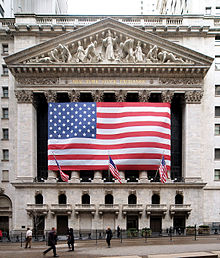
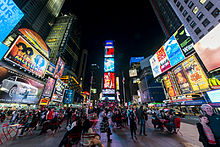
New York's gross state product in 2015 was $1.44 trillion. If New York State were an independent nation, it would rank as the 12th or 13th largest economy in the world, depending upon international currency fluctuations. However, in 2013, the multi-state, New York City-centered Metropolitan Statistical Area produced a gross metropolitan product (GMP) of nearly US$1.39 trillion,[132] while in 2012, the corresponding Combined Statistical Area[133] generated a GMP of over US$1.55 trillion, both ranking first nationally by a wide margin and behind the GDP of only twelve nations and eleven nations, respectively.[134]
Wall Street
Anchored by Wall Street in the Financial District of Lower Manhattan, New York City has been called both the most economically powerful city and the leading financial center of the world.[23][24][135][136][137] Lower Manhattan is the third-largest central business district in the United States and is home to the New York Stock Exchange, on Wall Street, and the NASDAQ, at 165 Broadway, representing the world's largest and second largest stock exchanges, respectively, when measured both by overall average daily trading volume and by total market capitalization of their listed companies in 2013.[131][138] Investment banking fees on Wall Street totaled approximately $40 billion in 2012,[139] while in 2013, senior New York City bank officers who manage risk and compliance functions earned as much as $324,000 annually.[140] In fiscal year 2013-14, Wall Street's securities industry generated 19% of New York State's tax revenue.[141] New York City remains the largest global center for trading in public equity and debt capital markets, driven in part by the size and financial development of the U.S. economy.[142]:31–32[143] New York also leads in hedge fund management; private equity; and the monetary volume of mergers and acquisitions. Several investment banks and investment managers headquartered in Manhattan are important participants in other global financial centers.[142]:34–35 New York is also the principal commercial banking center of the United States.[144]
Many of the world's largest media conglomerates are also based in the city. Manhattan contained approximately 520 million square feet (48.1 million m2) of office space in 2013,[145] making it the largest office market in the United States,[146] while Midtown Manhattan is the largest central business district in the nation.[147]
Silicon Alley
Silicon Alley, centered in New York City, has evolved into a metonym for the sphere encompassing the New York City metropolitan region's high technology and entrepreneurship ecosystem; in 2015, Silicon Alley generated over US$7.3 billion in venture capital investment.[28] High tech industries including digital media, biotechnology, software development, game design, and other fields in information technology are growing, bolstered by New York City's position at the terminus of several transatlantic fiber optic trunk lines,[148] its intellectual capital, as well as its growing outdoor wireless connectivity.[149] In December 2014, New York State announced a $50 million venture-capital fund to encourage enterprises working in biotechnology and advanced materials; according to Governor Andrew Cuomo, the seed money would facilitate entrepreneurs in bringing their research into the marketplace.[150] On December 19, 2011, then Mayor Michael R. Bloomberg announced his choice of Cornell University and Technion-Israel Institute of Technology to build a US$2 billion graduate school of applied sciences on Roosevelt Island in Manhattan, with the goal of transforming New York City into the world's premier technology capital.[151][152]
Tech Valley
Albany,[153] Saratoga County,[154][155] Rensselaer County, and the Hudson Valley, collectively recognized as eastern New York's Tech Valley, have experienced significant growth in the computer hardware side of the high-technology industry, with great strides in the nanotechnology sector, digital electronics design, and water- and electricity-dependent integrated microchip circuit manufacturing,[154] involving companies including IBM and its Thomas J. Watson Research Center,[156] GlobalFoundries, Samsung, and Taiwan Semiconductor, among others.[153][157] The area's high technology ecosystem is supported by technologically focused academic institutions including Rensselaer Polytechnic Institute and the SUNY Polytechnic Institute.[153] In 2015, Tech Valley, straddling both sides of the Adirondack Northway and the New York Thruway, generated over US$163 million in venture capital investment.[28] The Rochester area is important in the field of photographic processing and imaging as well as incubating an increasingly diverse high technology sphere encompassing STEM fields, similarly in part the result of private startup enterprises collaborating with major academic institutions, including the University of Rochester and Cornell University.[158] Westchester County has developed a burgeoning biotechnology sector in the 21st century, with over US$1 billion in planned private investment as of 2016,[159] earning the county the nickname Biochester.[160]
Media and entertainment
Creative industries, which are concerned with generating and distributing knowledge and information, such as new media, digital media, film and television production, advertising, fashion, design, and architecture, account for a growing share of employment, with New York City possessing a strong competitive advantage in these industries.[161] As of 2014[update], New York State was offering tax incentives of up to $420 million annually for filmmaking within the state, the most generous such tax rebate among the U.S. states. New York has also attracted higher-wage visual-effects employment by further augmenting its tax credit to a maximum of 35% for performing post-film production work in Upstate New York.[162] The filmed entertainment industry has been growing in New York, contributing nearly US$9 billion to the New York City economy alone as of 2015.[163]
Tourism
I Love New York (stylized I ❤ NY) is both a logo and a song that are the basis of an advertising campaign and have been used since 1977 to promote tourism in New York City,[164] and later to promote New York State as well. The trademarked logo, owned by New York State Empire State Development,[165] appears in souvenir shops and brochures throughout the state, some licensed, many not. The song is the state song of New York. The Broadway League reported that Broadway shows sold approximately US$1.27 billion worth of tickets in the 2013–2014 season, an 11.4% increase from US$1.139 billion in the 2012–2013 season. Attendance in 2013–2014 stood at 12.21 million, representing a 5.5% increase from the 2012–2013 season's 11.57 million.[166]
Exports
New York exports a wide variety of goods such as prepared foods, computers and electronics, cut diamonds, and other commodities. In 2007, the state exported a total of $71.1 billion worth of goods, with the five largest foreign export markets being Canada (US$15 billion), the United Kingdom (US$6 billion), Switzerland (US$5.9 billion), Israel (US$4.9 billion), and Hong Kong (US$3.4 billion). New York's largest imports are oil, gold, aluminum, natural gas, electricity, rough diamonds, and lumber. The state also has a large manufacturing sector that includes printing and the production of garments, mainly in New York City; and furs, railroad equipment, automobile parts, and bus line vehicles, concentrated in Upstate regions.
New York is the nation's third-largest grape producing state, and second-largest wine producer by volume, behind California. The southern Finger Lakes hillsides, the Hudson Valley, the North Fork of Long Island, and the southern shore of Lake Erie are the primary grape- and wine-growing regions in New York, with many vineyards. In 2012, New York had 320 wineries and 37,000 grape bearing acres, generating full-time employment of nearly 25,000 and annual wages of over US$1.1 billion, and yielding US$4.8 billion in direct economic impact from New York grapes, grape juice, and wine and grape products.[167]
New York is a major agricultural producer overall, ranking among the top five states for agricultural products including maple syrup, apples, cherries, cabbage, dairy products, onions, and potatoes. The state is the largest producer of cabbage in the U.S. The state has about a quarter of its land in farms and produced $3.4 billion in agricultural products in 2001. The south shore of Lake Ontario provides the right mix of soils and microclimate for many apple, cherry, plum, pear and peach orchards. Apples are also grown in the Hudson Valley and near Lake Champlain. A moderately sized saltwater commercial fishery is located along the Atlantic side of Long Island. The principal catches by value are clams, lobsters, squid, and flounder.
Education
The University of the State of New York oversees all public primary, middle-level, and secondary education in the state, while the New York City Department of Education manages the New York City Public Schools system. In 1894, reflecting general racial discrimination then, the state passed a law that allowed communities to set up separate schools for children of African-American descent. In 1900, the state passed another law requiring integrated schools.[168]
At the level of post-secondary education, the statewide public university system is the State University of New York, commonly referred to as SUNY. New York City also has its own City University of New York system, which is funded by the city. The SUNY system consists of 64 community colleges, technical colleges, undergraduate colleges, and doctoral-granting institutions, including several universities. New York's largest public university is the State University of New York at Buffalo, which was founded by U.S President and Vice President Millard Fillmore.[169][170] The four SUNY University Centers, offering a wide array of academic programs, are the University at Albany, Binghamton University, Stony Brook University, and the University at Buffalo.
Notable large private universities include the Columbia University in Upper Manhattan and Cornell University in Ithaca, both Ivy League institutions, as well as New York University in Lower Manhattan, and Fordham University in the Bronx, Manhattan, and Westchester County. Smaller notable private institutions of higher education include Rockefeller University, New York Institute of Technology, Yeshiva University, and Hofstra University. There are also a multitude of postgraduate-level schools in New York State, including Medical, Law, and Engineering schools. West Point, the service academy of the U.S. Army, is located just south of Newburgh, on the west bank of the Hudson River.
During the fiscal 2013 year, New York spent more on public education per pupil than any other state, according to U.S. Census Bureau statistics.[171]
Transportation
 |
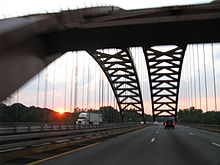
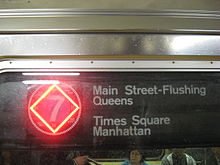
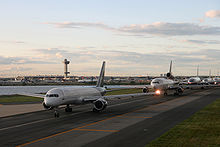
New York has one of the most extensive and one of the oldest transportation infrastructures in the country. Engineering challenges posed by the complex terrain of the state and the unique infrastructural issues of New York City brought on by urban crowding have had to be overcome perennially. Population expansion of the state has followed the path of the early waterways, first the Hudson River and Mohawk River, then the Erie Canal. In the 19th century, railroads were constructed along the river valleys, followed by the New York State Thruway in the 20th century.
The New York State Department of Transportation (NYSDOT) is the department of the government of New York[172] responsible for the development and operation of highways, railroads, mass transit systems, ports, waterways, and aviation facilities within New York State. The NYSDOT is headquartered at 50 Wolf Road in Colonie, Albany County. The Port Authority of New York and New Jersey (PANYNJ) is a joint venture between the States of New York and New Jersey and authorized by the US Congress, established in 1921 through an interstate compact, that oversees much of the regional transportation infrastructure, including bridges, tunnels, airports, and seaports, within the geographical jurisdiction of the Port of New York and New Jersey. This 1,500 square mile (3,900 km²) port district is generally encompassed within a 25-mile (40 km) radius of the Statue of Liberty National Monument.[173] The Port Authority is headquartered at 4 World Trade Center in Lower Manhattan.
In addition to the well known New York City Subway system – which is confined within New York City – four suburban commuter railroad systems enter and leave the city: the Long Island Rail Road, Metro-North Railroad, Port Authority Trans-Hudson, and five of New Jersey Transit's rail lines. The New York City Department of Transportation (NYCDOT) is the agency of the government of New York City[174] responsible for the management of much of New York City's own transportation infrastructure. Other cities and towns in New York have urban and regional public transportation. In Buffalo, the Niagara Frontier Transportation Authority runs the Buffalo Metro Rail light-rail system; in Rochester, the Rochester Subway operated from 1927 until 1956, but fell into disuse as state and federal investment went to highways.
The New York State Department of Motor Vehicles (NYSDMV or DMV) is the governmental agency responsible for registering and inspecting automobiles and other motor vehicles, as well as licensing drivers in the State of New York. As of 2008[update], the NYSDMV has 11,284,546 drivers licenses on file[175] and 10,697,644 vehicle registrations in force.[176] All gasoline-powered vehicles registered in New York State are required to have an emissions inspection every 12 months, in order to ensure that environmental quality controls are working to prevent air pollution. Diesel-powered vehicles with a gross weight rating over 8,500 lb that are registered in most Downstate New York counties must get an annual emissions inspection. All vehicles registered in New York State must get an annual safety inspection.
Portions of the transportation system are intermodal, allowing travelers to switch easily from one mode of transportation to another. One of the most notable examples is AirTrain JFK which allows rail passengers to travel directly to terminals at John F. Kennedy International Airport as well as to the underground New York City Subway system.
Government and politics
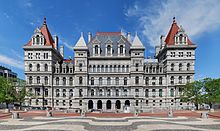
Government
The Government of New York embodies the governmental structure of the State of New York as established by the New York State Constitution. It is composed of three branches: executive, legislative, and judicial.
The Governor is the State's chief executive and is assisted by the Lieutenant Governor. Both are elected on the same ticket. Additional elected officers include the Attorney General, and the Comptroller. The Secretary of State, formerly an elected officer, is currently appointed by the Governor.
The New York State Legislature is bicameral and consists of the New York State Senate and the New York State Assembly. The Assembly consists of 150 members, while the Senate varies in its number of members, currently having 63. The Legislature is empowered to make laws, subject to the Governor's power to veto a bill. However, the veto may be overridden by the Legislature if there is a two-thirds majority in favor of overriding in each House. The permanent laws of a general nature are codified in the Consolidated Laws of New York.
The highest court of appeal in the Unified Court System is the Court of Appeals whereas the primary felony trial court is the County Court (or the Supreme Court in New York City). The Supreme Court also acts as the intermediate appellate court for many cases, and the local courts handle a variety of other matters including small claims, traffic ticket cases, and local zoning matters, and are the starting point for all criminal cases. The New York City courts make up the largest local court system.
The state is divided into counties, cities, towns, and villages, all of which are municipal corporations with respect to their own governments, as well as various corporate entities that serve single purposes that are also local governments, such as school districts, fire districts, and New York state public-benefit corporations, frequently known as authorities or development corporations. Each municipal corporation is granted varying home rule powers as provided by the New York Constitution. The state also has 10 Indian reservations.
Capital punishment
Capital punishment was reintroduced in 1995 under the Pataki administration, but the statute was declared unconstitutional in 2004, when the New York Court of Appeals ruled in People v. LaValle that it violated the state constitution. The remaining death sentence was commuted by the court to life imprisonment in 2007, in People v. John Taylor, and the death row was disestablished in 2008, under executive order from Governor Paterson. No execution has taken place in New York since 1963. Legislative efforts to amend the statute have failed, and death sentences are no longer sought at the state level, though certain crimes that fall under the jurisdiction of the federal government are subject to the federal death penalty.[177][178][179]
Federal representation
The State of New York sends 27 members to the House of Representatives[180] in addition to its two United States Senators. As of the 2000 census and the redistricting for the 2002 elections, the state had 29 members in the House, but the representation was reduced to 27 in 2013 due to the state's slower overall population growth relative to the overall national population growth.[181] From 2016, New York will have 29 electoral votes in national presidential elections (a drop from its peak of 47 votes from 1933 to 1953).
New York is represented by Chuck Schumer and Kirsten Gillibrand in the United States Senate and has the nation's third equal highest number of congressional districts, equal with Florida and behind California's 53 and Texas's 36.
The state has a strong imbalance of payments with the federal government. According to the Office of the New York State Comptroller, New York State received 91 cents in services for every $1 it sent in taxes to the U.S. federal government in the 2013 fiscal year; New York ranked in 46th place in the federal balance of payments to the state on a per capita basis.[182]
Politics
As of April 2016, Democrats represented a plurality of voters in New York State, constituting over twice as many registered voters as any other political party affiliation or lack thereof.[183] Since the second half of the 20th century, New York has generally supported candidates belonging to the Democratic Party in national elections. Democratic presidential candidate Barack Obama won New York State by over 25 percentage points in both 2012 and 2008. New York City, as well as the state's other major urban locales, including Albany, Buffalo, Rochester, Yonkers, and Syracuse, are significant Democratic strongholds, with liberal politics. Rural portions of upstate New York, however, are generally more conservative than the cities and tend to favor Republicans. Heavily populated suburban areas downstate, such as Westchester County and Long Island, have swung between the major parties since the 1980s, but more often than not support Democrats.
New York City is the most important source of political fundraising in the United States for both major parties. Four of the top five zip codes in the nation for political contributions are in Manhattan. The top zip code, 10021 on the Upper East Side, generated the most money for the 2000 presidential campaigns of both George W. Bush and Al Gore.[184]
The state of New York has the distinction of being the home state for both major-party nominees in three Presidential elections. The 1904 presidential election saw former New York Governor and incumbent President Theodore Roosevelt face Alton B. Parker, chief judge of the New York Court of Appeals. The 1944 presidential election had Franklin D. Roosevelt, following in his cousin Theodore's footsteps as former New York Governor and incumbent president running for re-election against then-current New York Governor Thomas E. Dewey. In the upcoming 2016 Presidential election, former United States Senator from New York, Hillary Clinton, a resident of Chappaqua is running as the Democratic Party nominee against Republican Party nominee, businessman Donald Trump, a resident of Manhattan.[185]
New York City is an important center for international diplomacy.[186] The United Nations Headquarters has been situated on the East Side of Midtown Manhattan since 1952.
| Year | Democratic | Republican | |||
|---|---|---|---|---|---|
| 2012 | 63.35% | 4,485,877 | 35.17% | 2,490,496 | |
| 2008 | 62.88% | 4,804,945 | 36.03% | 2,752,771 | |
| 2004 | 58.37% | 4,314,280 | 40.08% | 2,962,567 | |
| 2000 | 60.21% | 4,107,907 | 35.23% | 2,403,374 | |
| 1996 | 59.47% | 3,756,177 | 30.61% | 1,933,492 | |
| 1992 | 49.73% | 3,444,450 | 33.88% | 2,346,649 | |
| 1988 | 51.62% | 3,347,882 | 47.52% | 3,081,871 | |
| 1984 | 45.83% | 3,119,609 | 53.84% | 3,664,763 | |
| 1980 | 43.99% | 2,728,372 | 46.66% | 2,893,831 | |
| 1976 | 51.95% | 3,389,558 | 47.52% | 3,100,791 | |
| 1972 | 41.21% | 2,951,084 | 58.54% | 4,192,778 | |
| 1968 | 49.76% | 3,378,470 | 44.30% | 3,007,932 | |
| 1964 | 68.56% | 4,913,156 | 31.31% | 2,243,559 | |
| 1960 | 52.53% | 3,830,085 | 47.27% | 3,446,419 | |
| Party | Number of Voters | Percentage | |
|---|---|---|---|
| Democratic | 5,792,497 | 49.4% | |
| Republican | 2,731,688 | 23.29% | |
| Unaffiliated | 2,485,475 | 21.19% | |
| Independence | 475,566 | 4.06% | |
| Conservative | 159,355 | 1.36% | |
| Working Families | 48,344 | 0.41% | |
| Green | 26,271 | 0.22% | |
| Women's Equality | 1,283 | 0.01% | |
| Reform | 377 | 0.003% | |
| Other | 5,986 | 0.05% | |
| Total | 11,726,842 | 100% | |

Sports
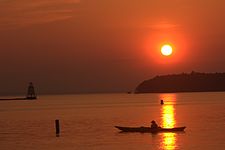
New York State is geographically home to one National Football League team, the Buffalo Bills, based in the Buffalo suburb of Orchard Park. Although the New York Giants and New York Jets represent the New York metropolitan area and were previously located in New York City, they play in MetLife Stadium, located in East Rutherford, New Jersey. New York also has two Major League Baseball teams, the New York Yankees (based in the Bronx) and the New York Mets (based in Queens). Minor league baseball teams also play in the State of New York, including the Long Island Ducks. New York is home to three National Hockey League franchises: the New York Rangers in Manhattan, the New York Islanders in Brooklyn, and the Buffalo Sabres in Buffalo. New York has two National Basketball Association teams, the New York Knicks in Manhattan, and the Brooklyn Nets in Brooklyn. New York is the home of a Major League Soccer franchise, New York City FC, currently playing in the Bronx. Although the New York Red Bulls represent the New York metropolitan area, they play in Red Bull Arena in Harrison, New Jersey.
New York hosted the 1932 and 1980 Winter Olympics at Lake Placid. The 1980 Games are known for the USA–USSR ice hockey match dubbed the "Miracle on Ice", in which a group of American college students and amateurs defeated the heavily favored Soviet national ice hockey team 4–3 and went on to win the gold medal against Finland. Along with St. Moritz, Switzerland and Innsbruck, Austria, Lake Placid is one of the three cities to have hosted the Winter Olympic Games twice. New York City bid for the 2012 Summer Olympics but lost to London.
Several U.S. national sports halls of fame are or have been situated in New York. The National Baseball Hall of Fame and Museum is located in Cooperstown, Otsego County. The National Museum of Racing and Hall of Fame in Saratoga Springs, Saratoga County, honors achievements in the sport of thoroughbred horse racing. The physical facility of the National Soccer Hall of Fame in Oneonta, also in Otsego County, closed in 2010, although the organization itself has continued inductions. The annual United States Open Tennis Championships is one of the world's four Grand Slam tennis tournaments and is held at the National Tennis Center in Flushing Meadows-Corona Park in the New York City borough of Queens.[187]
| New York State major league professional sports teams | ||
|---|---|---|
| Club | Sport | League |
| Buffalo Bills | Football | National Football League |
| Brooklyn Nets | Basketball | National Basketball Association |
| New York Knicks | Basketball | National Basketball Association |
| New York City FC | Soccer | Major League Soccer |
| Buffalo Sabres | Ice hockey | National Hockey League |
| New York Islanders | Ice Hockey | National Hockey League |
| New York Rangers | Ice Hockey | National Hockey League |
| New York Mets | Baseball | Major League Baseball |
| New York Yankees | Baseball | Major League Baseball |
See also
- Index of New York-related articles
- Outline of New York – organized list of topics about New York
References
- ^ "New York State Motto". New York State Library. January 29, 2001. Archived from the original on June 8, 2007. Retrieved November 16, 2007.
- ^ "Language spoken at home by ability to speak English for the population 5 years and over - 2014 American Community Survey 1-Year Estimates". Retrieved January 24, 2016.
- ^ a b "Land and Water Area of States (2000)". Infoplease.com. Retrieved April 11, 2008.
- ^ a b c d "Table 1. Annual Estimates of the Resident Population for the United States, Regions, States, and Puerto Rico: April 1, 2010 to July 1, 2015" (CSV). U.S. Census Bureau. December 23, 2015. Retrieved December 23, 2015.
- ^ "Marcy". NGS data sheet. U.S. National Geodetic Survey. Retrieved October 20, 2011.
- ^ a b "Elevations and Distances in the United States". United States Geological Survey. 2001. Archived from the original on February 1, 2009. Retrieved October 24, 2011.
- ^ a b Elevation adjusted to North American Vertical Datum of 1988.
- ^ a b c d e f "Annual Estimates of the Resident Population: April 1, 2010 to July 1, 2015 - 2015 Population Estimates". United States Census Bureau. Retrieved March 24, 2016.
- ^ "Supplemental Table 2. Persons Obtaining Lawful Permanent Resident Status by Leading Core Based Statistical Areas (CBSAs) of Residence and Region and Country of Birth: Fiscal Year 2014". U.S. Department of Homeland Security. Retrieved June 1, 2016.
- ^ a b "Yearbook of Immigration Statistics: 2013 Supplemental Table 2". U.S. Department of Homeland Security. Retrieved May 29, 2015.
- ^ a b "Yearbook of Immigration Statistics: 2012 Supplemental Table 2". U.S. Department of Homeland Security. Retrieved May 29, 2015.
- ^ "World's Largest Urban Areas [Ranked by Urban Area Population]". Rhett Butler. 2003–2006. Retrieved August 2, 2014.
- ^ "Largest Cities of the World – (by metro population)". Woolwine-Moen Group d/b/a Graphic Maps. Retrieved August 2, 2014.
- ^ "Global power city index 2009" (PDF). The Mori Memorial Foundation. Retrieved August 2, 2014.
- ^ Shira Poliak. "Adjusting To New York City". Sun Sentinel. Retrieved January 9, 2016.
Additionally, the fast-paced lifestyle of New York City demands adjusting.
- ^ "Dictionary - Full Definition of NEW YORK MINUTE". Merriam-Webster. Retrieved November 7, 2015.
- ^ "United Nations Visitors Centre". United Nations. 2011. Archived from the original on September 24, 2010. Retrieved August 2, 2014.
- ^ "Office of the Mayor Commission for the United Nations, Consular Corps and Protocol". The City of New York. 2012. Retrieved August 2, 2014.
- ^ "Consulate General of Iceland New York Culture". Consulate General of Iceland New York. Retrieved August 2, 2014.
- ^ "Consulate of Latvia in New York". Consulate of Latvia. Retrieved February 17, 2013.
- ^ "Introduction to Chapter 14: New York City (NYC) Culture". The Weissman Center for International Business Baruch College/CUNY 2011. Retrieved August 2, 2014.
- ^ "New York, Culture Capital of the World, 1940–1965 / edited by Leonard Wallock ; essays by Dore Ashton ... [et al.]". NATIONAL LIBRARY OF AUSTRALIA. Retrieved August 2, 2014.
- ^ a b c "Top 8 Cities by GDP: China vs. The U.S.". Business Insider, Inc. July 31, 2011. Retrieved October 28, 2015.
For instance, Shanghai, the largest Chinese city with the highest economic production, and a fast-growing global financial hub, is far from matching or surpassing New York, the largest city in the U.S. and the economic and financial super center of the world.
"PAL sets introductory fares to New York". Philippine Airlines. Retrieved March 25, 2015. - ^ a b Richard Florida (March 3, 2015). "Sorry, London: New York Is the World's Most Economically Powerful City". The Atlantic Monthly Group. Retrieved March 25, 2015.
Our new ranking puts the Big Apple firmly on top.
- ^ Richard Florida (May 8, 2012). "What Is the World's Most Economically Powerful City?". The Atlantic Monthly Group. Retrieved March 25, 2015.
- ^ Ann Shields (November 10, 2014). "The World's 50 Most Visited Tourist Attractions – No. 3: Times Square, New York City – Annual Visitors: 50,000,000". Travel+Lesiure. Retrieved July 17, 2015.
No. 3 Times Square, New York City - Annual Visitors: 50,000,000...No. 4 (tie) Central Park, New York City - Annual Visitors: 40,000,000...No. 9: Niagara Falls, New York and Ontario - Annual Visitors: 22,000,000...No. 10 Grand Central Terminal, New York City - Annual Visitors: 21,600,000
- ^ "Statue of Liberty". World Heritage. UNESCO. Retrieved July 17, 2015.
- ^ a b c "Venture Investment - Regional Aggregate Data". National Venture Capital Association and PricewaterhouseCoopers. Retrieved April 22, 2016.
- ^ Matt Flegenheimer (March 23, 2016). "Ted Cruz Deplores 'Liberal, Left-Wing Values' While Lobbying for New York Votes". The New York Times. Retrieved April 22, 2016.
- ^ The Associated Press (April 22, 2016). "The Latest: China Hopes US Joins Climate Deal Quickly". The New York Times. Retrieved April 22, 2016.
- ^ Lisa Foderaro (September 21, 2014). "Taking a Call for Climate Change to the Streets". The New York Times. Retrieved April 22, 2016.
- ^ "Academic Ranking of World Universities 2015". ShanghaiRanking Consultancy. Retrieved August 27, 2015.
- ^ "CWUR 2015 - World University Rankings". Center for World University Rankings. Retrieved August 27, 2015.
- ^ Centro Studi Storici Verrazzano
- ^ "Castle Island".
- ^ Reynolds, Cuyler (1906). Albany Chronicles: A History of the City Arranged Chronologically. J.B. Lyon Company.
- ^ Nevius, Michelle and James, "New York's many 9/11 anniversaries: the Staten Island Peace Conference", Inside the Apple: A Streetwise History of New York City, September 8, 2008. Retrieved September 24, 2012.
- ^ Scheltema, Gajus and Westerhuijs, Heleen (eds.),Exploring Historic Dutch New York. Museum of the City of New York/Dover Publications, New York (2011). ISBN 978-0-486-48637-6
- ^ "Declaration of Independence". history.com. Archived from the original on April 9, 2008. Retrieved April 10, 2008.
- ^ Alan Taylor (2006). The Divided Ground: Indians, Settlers, and the Northern Borderland of the American Revolution. Knopf. ISBN 978-0-679-45471-7.
- ^ "Sullivan/Clinton Interactive Map Set". Retrieved August 30, 2010.
- ^ Chen, David W. Battle Over Iroquois Land Claims Escalates The New York Times. May 16, 2000. . Retrieved April 11, 2008.
- ^ "Happy Evacuation Day". New York City Department of Parks and Recreation. Retrieved April 12, 2008.
- ^ "New York's Ratification". The U.S. Constitution Online. Retrieved April 10, 2008.
- ^ "The Erie Canal: A Brief History". New York State Canals. Archived from the original on January 24, 2010. Retrieved April 10, 2008.
- ^ Peter L. Bernstein, Wedding of the waters: The Erie Canal and the making of a great nation (2005).
- ^ Robert Greenhalgh Albion, The rise of New York port (1815-1860) (1939).
- ^ Ernest A. McKay, The Civil War and New York City (1990).
- ^ Frederick Phisterer, New York in the War of the Rebellion, 1861 To 1865 (1890), p. 88.
- ^ "Castle Garden as An Immigrant Depot:1855–1890" (PDF). National Park Service. Archived from the original (PDF) on November 10, 2013. Retrieved September 9, 2013.
- ^ "Castle Clinton". National Park Service. August 22, 2013. Retrieved September 9, 2013.
- ^ Vincent J. Cannato: American Passage: The History of Ellis Island. p.50: Harper Collins (2009) ISBN 0060742739
- ^ Linda Greenhouse (May 27, 1998). "The Ellis Island Verdict: The Ruling". The New York Times. Retrieved September 5, 2013.
- ^ "Statue Of Liberty National Monument". Nps.gov. Retrieved September 9, 2013.
- ^ Edelman, Susan (January 6, 2008). "Charting post-9/11 deaths". Retrieved January 22, 2012.
- ^ Katia Hetter (November 12, 2013). "It's official: One World Trade Center to be tallest U.S. skyscraper". CNN. Retrieved November 12, 2013.
- ^ Mary Johnson (October 29, 2012). "VIDEO: Dramatic Explosion at East Village Con Ed Plant". Copyright © 2009–2012, DNAinfo.com. All Rights Reserved. Retrieved December 2, 2012.
- ^ Jeff Stone & Maria Gallucci (October 29, 2014). "Hurricane Sandy Anniversary 2014: Fortifying New York -- How Well Armored Are We For The Next Superstorm?". International Business Times. Retrieved July 23, 2015.
- ^ Robert S. Eshelman (November 15, 2012). "ADAPTATION: Political support for a sea wall in New York Harbor begins to form". E&E Publishing, LLC. Retrieved July 23, 2015.
- ^ "Elevations and Distances in the United States". U.S Geological Survey. April 29, 2005. Archived from the original on February 1, 2009. Retrieved November 6, 2006.
- ^ About the Adirondack Park, Adirondack Park Agency. Retrieved July 1, 2009.
- ^ Eisenstadt, Peter, ed. (2005). The Encyclopedia of New York State. Syracuse University Press. p. 1619. ISBN 978-0-8156-0808-0.
- ^ Eisenstadt, Peter, ed. (2005). The Encyclopedia of New York State. Syracuse University Press. p. 1437. ISBN 978-0-8156-0808-0.
- ^ Eisenstadt, Peter, ed. (2005). The Encyclopedia of New York State. Syracuse University Press. ISBN 978-0-8156-0808-0.
- ^ "Climate of New York". New York State Climate Office – Cornell University. Archived from the original on April 12, 2008. Retrieved April 10, 2008.
- ^ The New York Post (June 3, 2007). "A Breath of Fresh New York Air". Archived from the original on June 6, 2007. Retrieved June 6, 2007.
- ^ "Typical high and low temperatures for New York Cities". US Travel Weather. Retrieved March 24, 2010.
- ^ "Age/sex/race in New York State: Based on Census 2010" (PDF). Retrieved May 15, 2012.
- ^ "Map of eleven regions". Visitnewyorkstate.net. Retrieved October 2, 2010.
- ^ a b Largest Park Area in the Contiguous US Remains Open to Visitors, Thursday, October 3, 2013. Regional Office of Sustainable Tourism / Lake Placid CVB. Retrieved July 26, 2014.
- ^ a b "Catskill Park History". catskillpark.org. Retrieved April 11, 2008. [dead link]
- ^ "The Catskill Region". catskillmtn.org. Retrieved September 15, 2014.
- ^ "Statue of Liberty". World Heritage. UNESCO. Retrieved November 24, 2013.
- ^ African Burial Ground, General Services Administration, accessed February 10, 2012
- ^ Eli Rosenberg (June 24, 2016). "Stonewall Inn Named National Monument, a First for the Gay Rights Movement". The New York Times. Retrieved July 4, 2016.
- ^ "Workforce Diversity The Stonewall Inn, National Historic Landmark National Register Number: 99000562". National Park Service, U.S. Department of the Interior. Retrieved July 4, 2016.
- ^ Hayasaki, Erika (May 18, 2007). "A new generation in the West Village". Los Angeles Times. Retrieved July 4, 2016.
- ^ "New York State Thruway". thruway.ny.gov. New York State Thruway Authority. Archived from the original on August 22, 2014. Retrieved September 15, 2014.
- ^ "New York: 2000 (Population and Housing Unit Counts)" (PDF). 2000 United States Census. United States Census Bureau. 2000. Retrieved September 18, 2010. (page 1 of the document, page 31 of the file)
- ^ "Annual Estimates of the Resident Population for Incorporated Places of 50,000 or More, Ranked by July 1, 2014 Population: April 1, 2010 to July 1, 2014 - United States -- Places of 50,000+ Population - 2014 Population Estimates". United States Census Bureau. Retrieved October 29, 2015.
- ^ "Domestic Migration Flows for States from the 2005 ACS" (Microsoft Word). Retrieved October 19, 2007. [dead link]
- ^ Timothy S. Parker (September 10, 2010). "New York Fact Sheet: NY agriculture income population food education employment farms top commodities exports counties financial indicators poverty organic farming farm income America USDA". Ers.usda.gov. Retrieved October 2, 2010.
- ^ Blake Ellis (March 25, 2011). "America's 5 biggest cities". CNN. Retrieved November 12, 2013.
- ^ Roberts, Sam (March 14, 2013). "Fewer People Are Abandoning the Bronx, Census Data Show". New York Times.
- ^ "State & County QuickFacts Los Angeles (city), California". U.S. Census Bureau. Retrieved July 9, 2015.
- ^ "Kings County, New York QuickFacts". U.S. Census Bureau. Retrieved March 24, 2016.
- ^ "Queens County, New York QuickFacts". U.S. Census Bureau. Retrieved March 24, 2016.
- ^ "Nassau County, New York QuickFacts". U.S. Census Bureau. Retrieved March 24, 2016.
- ^ "Suffolk County, New York QuickFacts". U.S. Census Bureau. Retrieved March 24, 2016.
- ^ "State & County QuickFacts New York". United States Census Bureau. Retrieved November 14, 2013.
- ^ "2010 Census National Summary File of Redistricting Data – Population and Housing Occupancy Status: 2010 – United States – Metropolitan Statistical Area; and for Puerto Rico". 2010 United States Census. United States Census Bureau, Population Division. April 14, 2011. Retrieved March 14, 2012.
- ^ Lawrence A. McGlinn, Department of Geography SUNY-New Paltz. "Beyond Chinatown: Dual immigration and the Chinese population of metropolitan New York City, 2000, Page 4" (PDF). Middle States Geographer, 2002, 35: 110–119, Journal of the Middle States Division of the Association of American Geographers. Retrieved June 28, 2015.
- ^ "Chinatown New York City Fact Sheet" (PDF). www.explorechinatown.com. Retrieved June 28, 2015.
- ^ Sarah Waxman. "The History of New York's Chinatown". Mediabridge Infosystems, Inc. Retrieved June 28, 2015.
- ^ a b c "Yearbook of Immigration Statistics: 2013 Supplemental Table 1". U.S. Department of Homeland Security. Retrieved May 29, 2015.
- ^ a b "Yearbook of Immigration Statistics: 2012 Supplemental Table 1". U.S. Department of Homeland Security. Retrieved May 29, 2015.
- ^ a b c "New York QuickFacts". U.S. Census Bureau. January 17, 2012. Retrieved April 18, 2012.
- ^ a b c d "Historical Census Statistics on Population Totals By Race, 1790 to 1990, and By Hispanic Origin, 1970 to 1990, For The United States, Regions, Divisions, and States". [dead link]
- ^ Population of New York: Census 2010 and 2000 Interactive Map, Demographics, Statistics, Quick Facts[dead link]
- ^ Center for New Media and Promotions(C2PO). "2010 Census Data". census.gov.
- ^ Awesome America: New York. Retrieved August 18, 2007.
- ^ "Americans under age 1 now mostly minorities, but not in Ohio: Statistical Snapshot". The Plain Dealer. June 3, 2012.
- ^ Thomas Kaplan & Jason Horowitz (August 13, 2014). "Cuomo, Visiting Israel, Joins Growing U.S. List". The New York Times. Retrieved September 28, 2014.
- ^ "Jewish Population in the United States, by State". American-Israeli Cooperative Enterprise. Retrieved November 11, 2013.
- ^ David Brooks (March 7, 2013). "The Orthodox Surge". The New York Times. Retrieved November 11, 2013.
- ^ a b "State & County QuickFacts - New York QuickLinks". United States Census Bureau. Retrieved September 13, 2015.
- ^ Dan Bilefsky (June 21, 2011). "For New Life, Blacks in City Head to South". The New York Times. Retrieved September 13, 2015.
- ^ Christine Kim; Demand Media. "Queens, New York, Sightseeing". USA Today. Retrieved July 19, 2014.
- ^ Andrew Weber (April 30, 2013). "Queens". NewYork.com. Retrieved July 19, 2014.
- ^ "Profile of General Population and Housing Characteristics: 2010 Demographic Profile Data". U.S. Census Bureau. Retrieved October 3, 2015.
- ^ "Profile of General Demographic Characteristics: Census 2000 Summary File 1 (SF 1) 100-Percent Data". U.S. Census Bureau. Retrieved October 3, 2015.
- ^ "State & County QuickFacts Nassau County, New York QuickLinks". United States Census Bureau. Retrieved November 14, 2013.
- ^ Heng Shao (April 10, 2014). "Join The Great Gatsby: Chinese Real Estate Buyers Fan Out To Long Island's North Shore". Forbes. Retrieved August 2, 2014.
- ^ "Yearbook of Immigration Statistics: 2011 Supplemental Table 1". U.S. Department of Homeland Security. Retrieved November 10, 2013.
- ^ "Yearbook of Immigration Statistics: 2010 Supplemental Table 1". U.S. Department of Homeland Security. Retrieved November 10, 2013.
- ^ John Marzulli (May 9, 2011). "Malaysian man smuggled illegal Chinese immigrants into Brooklyn using Queen Mary 2: authorities". The New York Daily News. Retrieved November 10, 2013.
- ^ "China City of America Becoming Reality in Catskills". China City of America. Retrieved November 2, 2015.
- ^ "Endangered Language Alliance". 2012. Retrieved November 11, 2013.
- ^ "Linguistics- Say what?". The Economist. September 10, 2011. Retrieved November 11, 2013.
- ^ N. R. Kleinfield (January 15, 2016). "New Yorkers, Self-Assured and Opinionated, Defend Their Values". The New York Times on MSN. Retrieved January 15, 2016.
- ^ Roberts, Sam (April 28, 2010). "Listening to (and Saving) the World's Languages". The New York Times. Retrieved November 11, 2013.
- ^ a b "New York". Modern Language Association. Retrieved August 6, 2013.
- ^ "The Association of Religion Data Archives | State Membership Report". www.thearda.com. Retrieved November 27, 2013.
- ^ Simone Weichselbaum (June 26, 2012). "Nearly one in four Brooklyn residents are Jews, new study finds". New York Daily News. Retrieved January 9, 2016.
- ^ "Largest Indoor Buddha in the Western Hemisphere". RoadsideAmerica.com. Retrieved October 27, 2015.
- ^ "LGBT Percentage Highest in D.C., Lowest in North Dakota". State of the States. Gallup Politics. February 15, 2013.
- ^ Williams Inst. Census Snapshot http://williamsinstitute.law.ucla.edu/category/research/census-lbgt-demographics-studies/
- ^ "NYC Same-Sex Marriages Generate $259 Million in Economic Impact". New York City Mayor Bloomberg, retrieved November 26, 2013
- ^ Nicholas Confessore & Michael Barbaro (June 24, 2011). "New York Allows Same-Sex Marriage, Becoming Largest State to Pass Law". The New York Times. Retrieved November 11, 2013.
- ^ Jennifer Fermino (March 7, 2016). "De Blasio: NYC toilets won't discriminate by gender identity". New York Daily News. Retrieved March 26, 2016.
- ^ a b "2013 WFE Market Highlights" (PDF). World Federation of Exchanges. Retrieved July 20, 2014.
- ^ "Gross Metropolitan Product (GMP) of the United States in 2013, by metropolitan area (in billion current U.S. dollars)". Statista. Retrieved September 12, 2014.
- ^ "Revised Delineations of Metropolitan Statistical Areas, Micropolitan Statistical Areas, and Combined Statistical Areas, and Guidance on Uses of the Delineations of These Areas" (PDF). Executive Office of the President – Office of Management and Budget. p. 106. Retrieved June 28, 2015.
- ^ "U.S. Metro Economies (note CSA 2012 GMP total includes sum of New York, Bridgeport, New Haven, Allentown, Trenton, Poughkeepsie, and Kingston MSA 2012 GMP values cited)" (PDF). IHS Global Insight, The United States Conference of Mayors, and The Council on Metro Economies and the New American City. November 2013. pp. 9 through 18 in Appendix Tables. Retrieved June 28, 2015.
- ^ John Glover (November 23, 2014). "New York Boosts Lead on London as Leading Finance Center". Bloomberg L.P. Retrieved March 25, 2015.
- ^ "UBS may move US investment bank to NYC". e-Eighteen.com Ltd. June 10, 2011. Retrieved March 25, 2015.
- ^ "The Global Financial Centres Index 17" (PDF). Long Finance. March 23, 2015. Retrieved March 25, 2015.
- ^ "NYSE Listings Directory". Retrieved March 25, 2015.
- ^ Ambereen Choudhury, Elisa Martinuzzi & Ben Moshinsky (November 26, 2012). "London Bankers Bracing for Leaner Bonuses Than New York". Bloomberg L.P. Retrieved July 20, 2014.
- ^ Sanat Vallikappen (November 10, 2013). "Pay Raises for Bank Risk Officers in Asia Trump New York". Bloomberg L.P. Retrieved July 20, 2014.
- ^ "DiNapoli: Wall Street Bonuses Edge Up in 2014". Office of the New York State Comptroller. March 11, 2015. Retrieved July 15, 2015.
- ^ a b McKinsey & Company and the New York City Economic Development Corporation. "Sustaining New York's and the US' Global Financial Services Leadership" (PDF). City of New York. Retrieved July 19, 2015.
- ^ "Total debt securities" (PDF). Bank for International Settlements. June 2013. Retrieved July 19, 2015.
- ^ Saabira Chaudhuri (September 15, 2014). "Ranking the Biggest U.S. Banks: A New Entrant in Top 5". The Wall Street Journal. Retrieved July 19, 2015.
- ^ "What is an office condominium?". Rudder Property Group. Retrieved May 28, 2013.
- ^ "Understanding The Manhattan Office Space Market". Officespaceseeker.com. Retrieved July 20, 2014.
- ^ "Marketbeat United States CBD Office Report 2Q11" (PDF). Cushman & Wakefield, Inc. Archived from the original (PDF) on May 8, 2013. Retrieved July 20, 2014.
- ^ "Telecommunications and Economic Development in New York City: A Plan for Action" (PDF). New York City Economic Development Corporation. March 2005. Archived from the original (PDF) on March 7, 2008. Retrieved July 19, 2006.
- ^ Ivan Pereira (December 10, 2013). "City opens nation's largest continuous Wi-Fi zone in Harlem". amNewYork/Newsday. Retrieved February 11, 2014. [dead link]
- ^ Freeman Klopott (December 12, 2014). "New York State Will Start $50 Million Venture-Capital Fund". Bloomberg L.P. Retrieved August 26, 2015.
- ^ RICHARD PÉREZ-PEÑA (December 19, 2011). "Cornell Alumnus Is Behind $350 Million Gift to Build Science School in City". The New York Times. Retrieved August 1, 2014.
- ^ Ju, Anne (December 19, 2011). "'Game-changing' Tech Campus Goes to Cornell, Technion". Cornell University. Retrieved August 26, 2015.
- ^ a b c Larry Rulison (July 10, 2015). "Made in Albany: IBM reveals breakthrough chip made at SUNY Poly". Albany Times-Union. Retrieved July 12, 2015.
- ^ a b Keshia Clukey (June 27, 2014). "Better than advertised: Chip plant beats expectations". Albany Business Review. Retrieved July 20, 2015.
- ^ "Fab 8 Overview". GLOBALFOUNDRIES Inc. Retrieved July 12, 2015.
- ^ John Markoff (October 1, 2015). "IBM Scientists Find New Way to Shrink Transistors". The New York Times. Retrieved October 2, 2015.
- ^ Freeman Klopott; Xu Wang & Niamh Ring (September 27, 2011). "IBM, Intel Start $4.4 Billion in Chip Venture in New York". 2011 Bloomberg. Retrieved July 12, 2015.
- ^ "High Tech Rochester adds 4 businesses". Rochester Democrat and Chronicle. November 7, 2013. Retrieved August 26, 2015.
- ^ John Jordan (January 2016). "$1.2 Billion Project Could Make Westchester a Biotech Destination". Hudson Gateway Association of Realtors. Retrieved April 9, 2016.
- ^ Steve Ditlea. "Westchester's Unexpected Powerhouse Position In the Biotech Industry - Four years after our initial look at Westchester's biotech industry, the sector has gone from fledgling to behemoth.". Today Media. Retrieved April 7, 2016.
All around, there are signs of a Biochester bloom:
- ^ Currid, Elizabeth (2006). "New York as a Global Creative Hub: A Competitive Analysis of Four Theories on World Cities". Economic Development Quarterly. 20 (4): 330–350. doi:10.1177/0891242406292708.
- ^ Richard Verrier & Steven Zeitchik (May 4, 2014). "New York taking a larger bite out of Hollywood productions". Los Angeles Times. Retrieved July 15, 2015.
- ^ "Mayor De Blasio Announces Increased Growth of New York City's Entertainment Industry Brings $8.7 billion into the Local Economy". City of New York Mayor's Office of Media and Entertainment. October 15, 2015. Retrieved April 10, 2016.
- ^ Interview with Milton Glaser, The Believer
- ^ "I Love New York Logo". New York State Education Department. September 26, 2013. Retrieved May 4, 2014.
- ^ "Broadway Calendar-Year Statistics". The Broadway League. Retrieved July 20, 2014.
- ^ "Welcome to New York Wine Country!". New York Wine & Grape Foundation. Retrieved July 20, 2015.
- ^ Martha A. Sandweiss, Passing Strange: A Gilded Age Tale of Love and Deception Across the Color Line, New York: Penguin Press, 2009, p. 213
- ^ "SUNY Buffalo: Complete Campus List". Suny.edu. Retrieved 2016-06-20.
- ^ "Chancellors and Presidents of the University". University of Buffalo, The State University of New York. Retrieved 2016-06-20.
- ^ "Education Spending Per Student by State". Governing. Retrieved July 15, 2015.
- ^ Transportation Law § 11. "There shall be in the state government a department of transportation. The head of the department shall be the commissioner of transportation, [...]" Accessed July 19, 2015.
- ^ "2002 Annual Report" (PDF). PANY. 2003. . Accessed July 19, 2015.
- ^ New York City Charter § 2901; "There shall be a department of transportation, the head of which shall be the commissioner of transportation." Accessed July 19, 2015.
- ^ "NYS DMV – Statistics – NYS Driver Licenses on File – 2008". New York State Department of Motor Vehicles. Archived from the original on October 11, 2010. Retrieved July 2, 2010.
- ^ "NYS DMV – Statistics – Vehicle Registrations in Force – 2008". New York State Department of Motor Vehicles. Archived from the original on October 11, 2010. Retrieved July 2, 2010.
- ^ Rob Gallagher (October 25, 2005). "New York Executions". Archived from the original on May 28, 2008. Retrieved April 9, 2009.
- ^ Scott, Brendan (July 24, 2008). "Gov Pulls Switch on Death Cell". New York Post. Retrieved April 9, 2009.
- ^ Powell, Michael (April 13, 2005). "In N.Y., Lawmakers Vote Not to Reinstate Capital Punishment". The Washington Post. Retrieved April 11, 2008.
- ^ "Directory of Representatives". House.gov. Retrieved March 15, 2014.
- ^ Rey, Jay pubdate=Dec 22, 2010. "N.Y.'s slow growth will mean loss of two seats in House". The Buffalo News. Archived from the original on May 16, 2012. Retrieved December 22, 2010. CS1 maint: Multiple names: authors list (link)
- ^ Thomas P. DiNapoli, State Comptroller (October 2015). "New York's Balance of Payments in the Federal Budget - Federal Fiscal Year 2013" (PDF). Office of the New York State Comptroller. Retrieved April 27, 2016.
- ^ a b NYSVoter Enrollment by County, Party Affiliation and Status Accessed April 30, 2016.
- ^ Opensecrets.org (May 16, 2005). "2006 Election Overview: Top Zip codes". Retrieved July 19, 2006.
- ^ Roy, Yancey. "Clinton vs. Trump: 2 presidential candidates from one state". Newsday. Retrieved 25 September 2016.
- ^ "NYC Mayor's Office for International Affairs". The City of New York. Retrieved June 24, 2015.
- ^ "US Open 2015". United States Tennis Association. Retrieved July 6, 2015.
Further reading
- French, John Homer (1860). Historical and statistical gazetteer of New York State. Syracuse, New York: R. Pearsall Smith. OCLC 224691273. (Full text via Google Books.)
- New York State Historical Association (1940). New York: A Guide to the Empire State. New York City: Oxford University Press. ISBN 978-1-60354-031-5. OCLC 504264143. (Full text via Google Books.)
External links
- New York State Guide, from the Library of Congress
- New York at DMOZ
 Geographic data related to New York at OpenStreetMap
Geographic data related to New York at OpenStreetMap
|
|
|
|---|---|
|
Albany (capital)
|
|
| Topics | |
| Politics | |
| Regions |
|
| Metro areas | |
| Counties |
|
| Places | |
| Topics | |
|---|---|
| States | |
| Major cities |
|
| State capitals | |
|
Political divisions of the United States
|
|
|---|---|
| States |
|
| Federal district | |
| Insular areas | |
| Outlying islands | |
| Indian reservations | |
| Associated states | |
| Find out more on Wikipedia's Sister projects |
|
Coordinates: 43°N 75°W / 43°N 75°W / 43; -75 (New York)
 |
Lake Erie Lake Ontario |
 |
||
|
||||



